12 Must-Read Books About the Tourism Industry


Tourism Economy
Tourism technology, tourism marketing, tourism industry.
With hundreds of books about the tourism industry, you might find it hard to decide which one to read next . The tourism industry books cover a wide variety of topics. The best way to find an interesting read is to choose one that addresses the topic that you find interesting .
To help you, we put together a list of must-read books about the tourism industry. Below you can find relevant information about every book we included, such as a short description, ratings, price, and why you should read it.
It’s always interesting to look at tourism as an economy. The following books will help you expand your knowledge of the tourism economy.
Sustainable Tourism Supply Chain Management

Author: Sudhanshu Yoshi
First edition date: Release scheduled for October 1, 2022
Number of editions: 1
Goodreads rating : N/A
Amazon rating : N/A
Price on Amazon : Pre-order price $149.99
While scheduled for release in 2022, you should have your eyes on this book. The author is focused on sustainable supply chain management and sustainable tourism management in general . The book offers in-depth explanations of the aspect of the supply chain that continuously becomes more complex with every passing year.
Why we chose it : We chose this book because it’s the first book that provides a comprehensive analysis of the effects policies and strategies have on the sustainable tourism supply chain .
Things we don’t like : If you are not familiar with the concepts of sustainable tourism management, you might find this book hard to read, as it assumes that you have an extensive background in this field.
Tourism Policy and Planning: Yesterday, Today, and Tomorrow
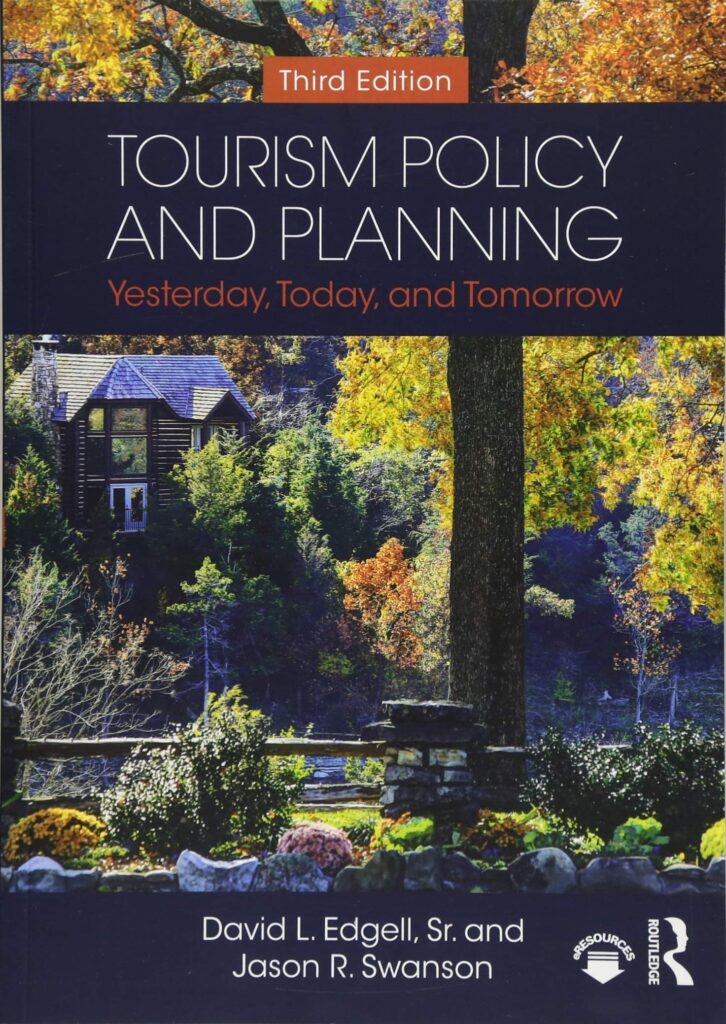
Author: David L. Edgell, Jason R. Swanson, Ginger Smith, Jason Swanson, and David L. Edgell Sr.
First edition date: May 1, 2018
Number of editions: 3
Amazon rating : 4.3/5
Price on Amazon : Hardcover $173.27, Paperback $52.85
The book explains the connection between tourism policies and strategic tourism planning. The authors explain in great detail the entire tourism policy process and how it affects planning on all levels, including local, national, and international.
Why we chose it : The book is perfect for people interested in the tourism policy process, and the latest edition addresses some new interesting topics such as terrorism and sustainable tourism. It also introduces new case studies.
Things we don’t like : While the book addresses many concepts of policies and strategic planning, it is still considered an introduction, rendering it less valuable for experts on the subject.
Travel Industry Economics: A Guide for Financial Analysis
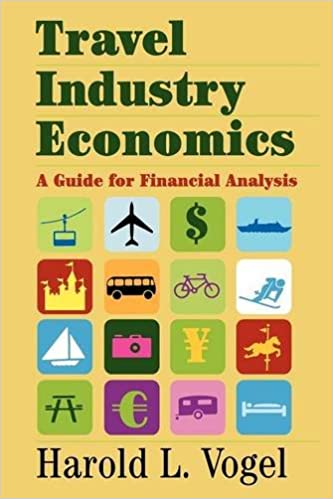
Author: Harold L. Vogel
First edition date: January 15, 2001
Number of editions: 4
Goodreads rating : 3/5
Amazon rating : 3/5
Price on Amazon : Hardcover $97.31, Paperback $99.99
The book closely examines all components of the travel sector, such as marketing, hotels, airlines, tourism, theme parks, and cruise lines. It provides reviews, historical performance, and analysis of every sector , making it a must-read for travel professionals interested in the financial aspect of their operation.
Why we chose it : We chose this book because the author regularly publishes new editions with updated information. For instance, the latest edition analyses the impact big data, emerging technologies, and pandemics have on the tourism sector.
Things we don’t like : The book is a comprehensive guide for travel companies interested in improving financial performance and marketing. It addresses complex concepts from the start, so it’s not beginner-friendly.
Transforming Travel: Realizing the Potential of Sustainable Tourism
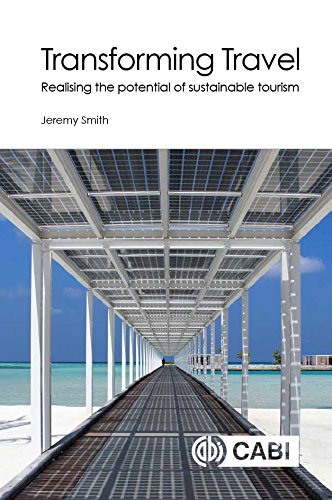
Author: Jeremy Smith
First edition date: December 19, 2017
Goodreads rating : 4/5
Amazon rating : 4.5/5
Price on Amazon : Paperback $30.75
The author features the success stories of the most innovative travel business across the world . The book is all about the benefits of sustainable tourism, and the common challenges travel companies and hotels face when deciding to go sustainable.
Why we chose it : We chose this book because it enables you to gather deep insights from the case studies. There are also very interesting stories from pioneers and thinkers in sustainable tourism . The book also helps readers discover the most efficient ways to promote sustainable tourism even in emerging economies.
Things we don’t like : While the book highlights some successful examples of sustainable tourism, the examples are somewhat outdated, and the book deserves a 2nd edition to bring new best practices to light.
As one of the fastest-growing sectors, tourism heavily relies on various technologies. Here are the books that cover tourism technology.
How Robots Can Bring Positive Emotion: To Travelers
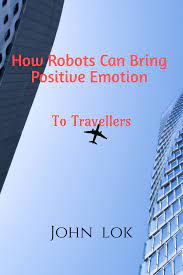
Author: John Lok
First edition date: January 27, 2022
Price on Amazon : Paperback $14.62
The future of AI use in the travel sector is now. This book explains the key role of AI and Big Data in the tourism industry . It enables the readers to truly understand the impact of emerging technologies and how they can help organisations predict shifts in the target market and changes in consumer behaviour.
Why we chose it : We chose this book because it is a rare find in the Books About Tourism Industry category. The book tackles some of the most exciting implementations of AI in the sector, such as building positive customer experiences and emotions.
Things we don’t like : While the book enables the readers to understand the importance of using AI and big data to create positive experiences, it doesn’t showcase case studies and positive outcomes of implementing AI and big data.
An SPSS Guide for Tourism, Hospitality, and Events Researchers
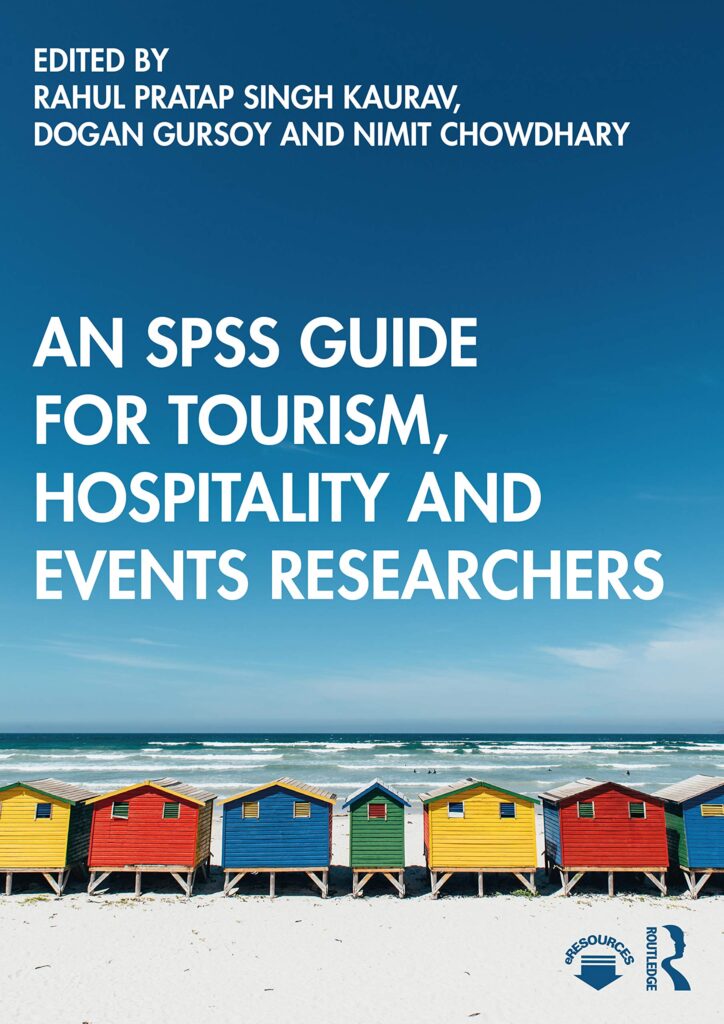
Author: Rahul Pratap Singh Kaurav, Dogan Gursoy, and Nimit Chowdhary
First edition date: December 15, 2020
Price on Amazon : Hardcover $155.58, Paperback $44.95
The book provides everything a reader has to know about SPSS, a statistical analytics software, to undertake analysis of data at any scale. The book helps readers identify the best statistical method for specific research and delivers step-by-step instructions.
Why we chose it : We chose this book because it’s the first book that enables researchers in the field of tourism to use big data to identify patterns and trends and draw actionable insights.
Things we don’t like : The book provides highly technical knowledge, and unless you have data scientists or analysts on your team, you won’t be able to make much use of it.
Tourism Information Technology
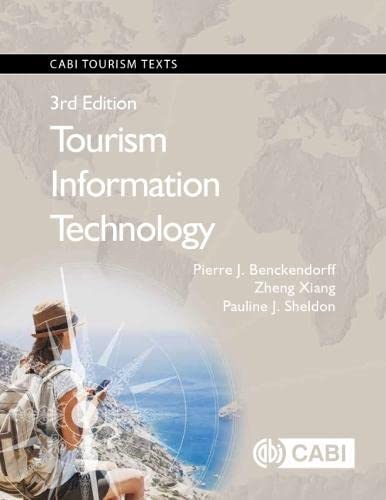
Author: Pierre J Benckendorff, Zheng Xiang, Pauline J Sheldon
First edition date: November 14, 2017
Goodreads rating: N/A
Amazon rating: 4.6/5
Price on Amazon: Paperback $53.42
Tourism Information Technology outlines all the challenges of using technology in the tourism sector. It goes through various information technology use cases in the travel sector. It covers tech used in destinations, airlines, accommodation, and travel intermediaries.
Why we chose it: We chose this book because it’s organized to reflect the stages of the traveler’s journey. It outlines how travelers interact with technologies during the decision-making process.
Things we don’t like: The book is intended for students, and we don’t like that it also focuses on outdated technology solutions which you have to go through to discover the modern technologies in use today.
Advances in Tourism, Technology and Systems: Selected Papers from ICOTTS20 Vol 1 and 2
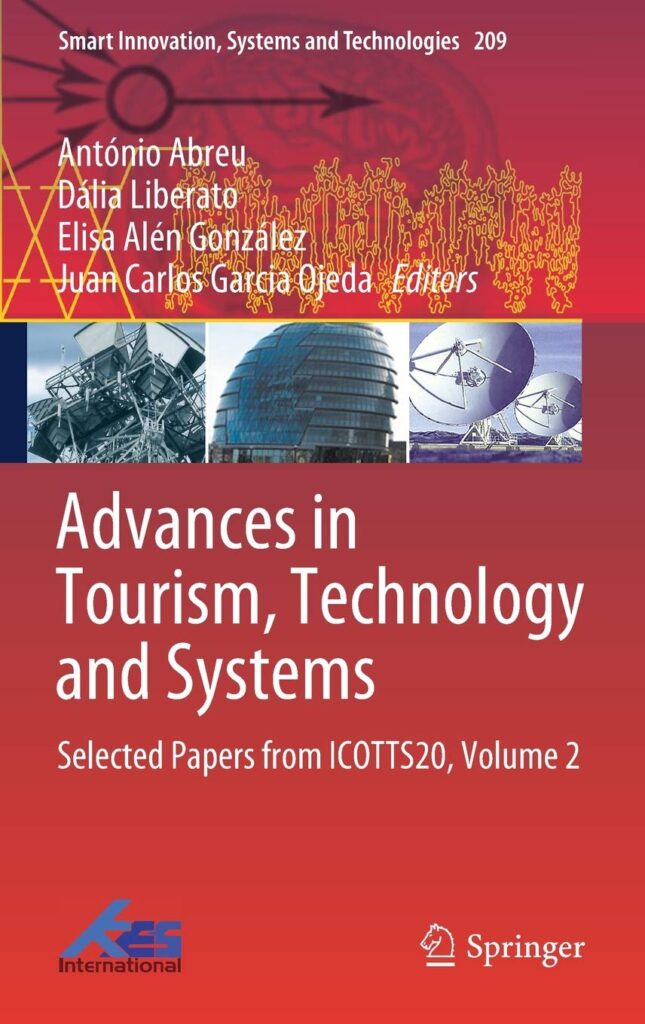
Author: João Vidal de Carvalho, Álvaro Rocha, Pedro Liberato, Alejandro Peña
First edition date: November 16, 2020
Amazon rating: N/A
Price on Amazon: Hardcover $14.60
This book is a collection of research papers presented at ICOTTS 2020. The research paper covers various topics ranging from information technology use in tourism in general to the digital transformation of the tourism business. It also outlines a few studies on how big data and robotics changed the sector.
Why we chose it: The researchers presented at ICOTTS provide valuable insights into technology use in tourism . It’s one of the best resources to stay tuned to the latest technology use cases, best practices, and outcomes.
Things we don’t like: This is not a classic book which makes it harder to consume, especially for readers not used to skimming through research papers.
In case you want to find out more about tourism marketing, the following books will help you learn and discover interesting facts and strategies.
Marketing Tourist Destinations in Emerging Economies
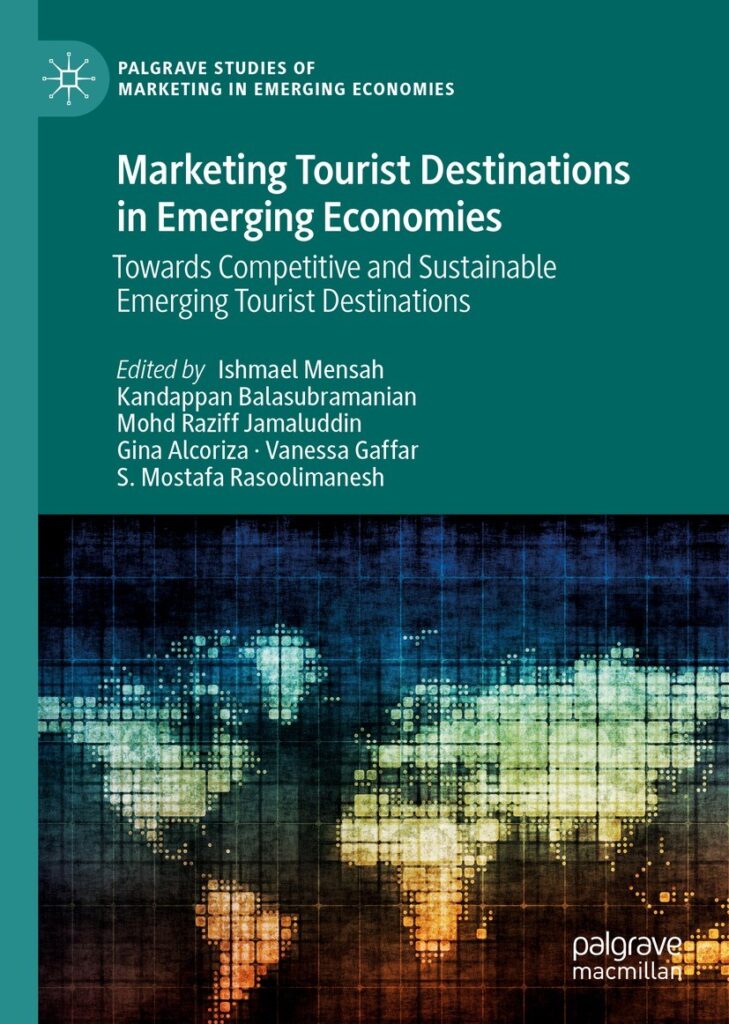
Author: Ishmael Mensah, Kandappan Balasubramanian, Mohd Raziff Jamaluddin, Gina Alcoriza, Vanessa Gaffar, and S. Mostafa Rasoolimanesh
First edition date: November 28, 2021
Price on Amazon : Hardcover $169.99
The book helps readers identify and understand the risks that can derail tourism in emerging economies. More importantly, it offers marketing strategies and best practices that businesses in the hotel industry and hospitality industry can use to flourish in emerging economies .
Why we chose it : The countries with emerging economies can leverage tourism as an economic generator. We chose this book because it provides practical marketing advice to travel industry organizations in emerging economies .
Things we don’t like : The book is focused on destination and crisis management and marketing during pandemics. Readers that are familiar with these concepts might find the book a less valuable read.
Marketing Handbook for Health Tourism
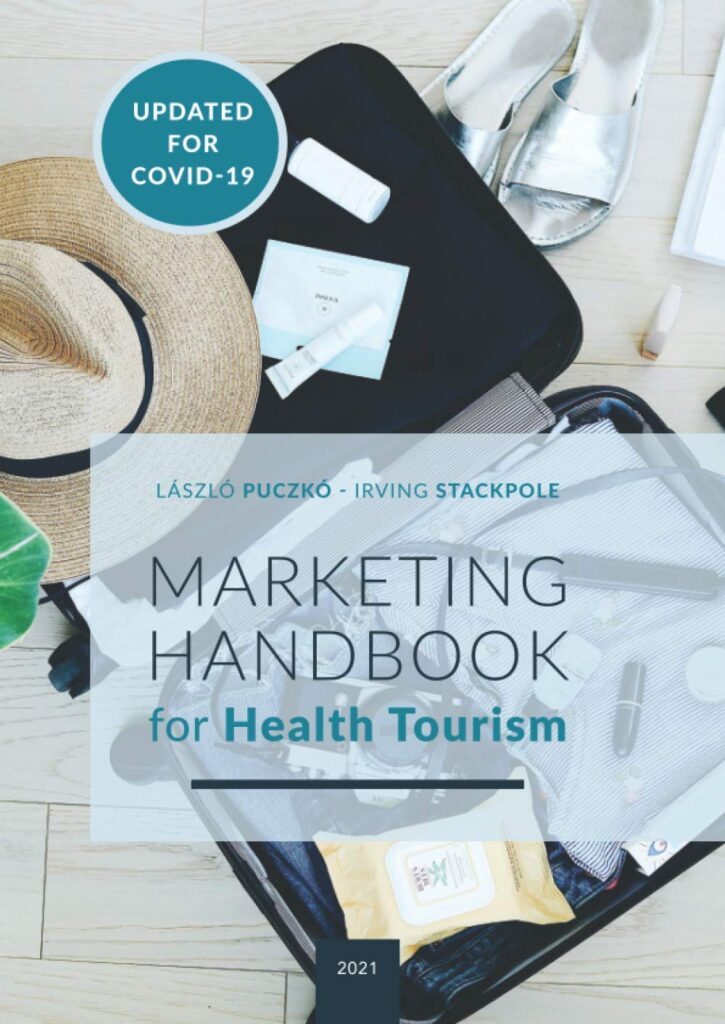
Author: Irving L Stackpole and László Puczkó
First edition date: February 18, 2021
Goodreads rating :
Amazon rating : 4.1/5
Price on Amazon : Paperback $48.50
Marketing Handbook for Health Tourism provides actionable insights for destination managers and health, wellness, and medical service providers . It also features examples and practical advice to health tourism professionals who want to attract more travelers and establish themselves as trustworthy service providers.
Why we chose it : We chose this book because it offers practical advice to niche audiences. Given that health tourism is becoming popular, knowing what to do and how to do it is very important if you want to stay competitive.
Things we don’t like : While the book offers case studies and practical advice, there is still more ground to cover, and health tourism organizations might need more data to make informed decisions.
Future of Tourism Marketing
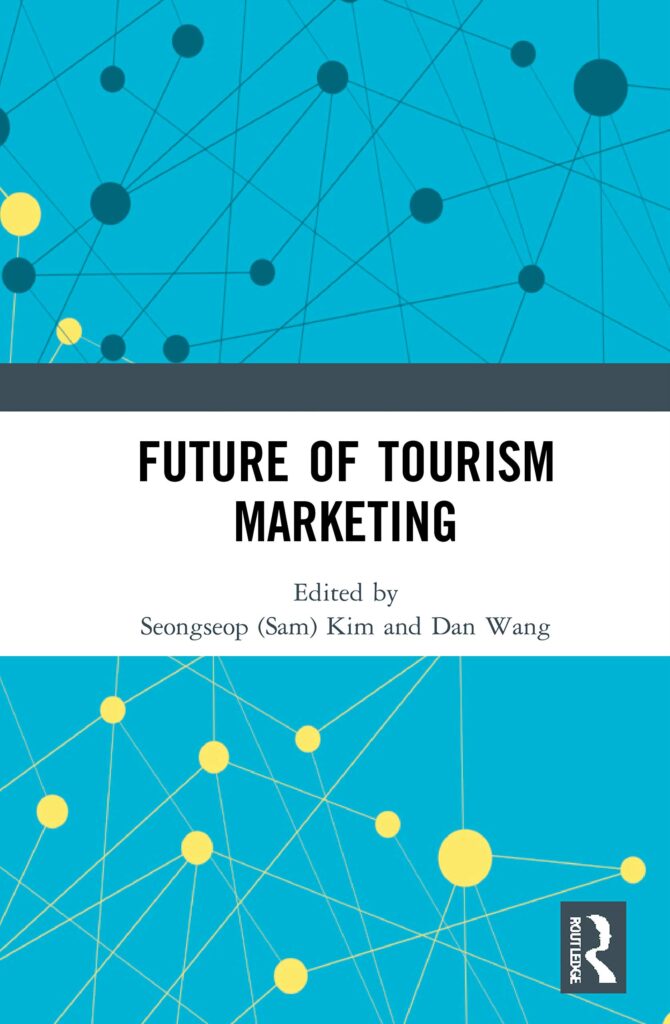
Author: Seongseop (Sam) Kim and Dan Wang
First edition date: June 15, 2021
Price on Amazon : Hardcover $164.34
Future of Tourism Marketing is a comprehensive read tackling the topic of digital marketing tools used in the tourism sector . The book outlines the most recent advancements in information technology and how they impact the marketing strategies for businesses in this vertical.
Why we chose it : We chose this book because it even addresses the use of emerging technologies such as AI, VR, GIS systems, and robots in tourism marketing.
Things we don’t like : The only thing we don’t like about this book is its price point which is quite high compared to some other titles on our list.
Marketing for Tourism, Hospitality & Events: A Global & Digital Approach
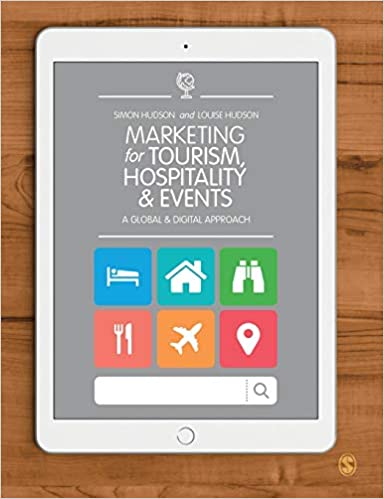
Author: Simon Hudson and Louise Hudson
First edition date: August 9, 2017
Goodreads rating : 4.33/5
Price on Amazon : Hardcover $158.55, Paperback $58.54
Marketing for Tourism, Hospitality & Events: A Global & Digital Approach addresses two major topics. First, it emphasizes the importance of acknowledging the shift in tourism demographics. And it follows by addressing modern tourism marketing strategies and the value of personalized messaging and offers .
Why we chose it : We like that the authors shared their personal experiences and insights while also providing relevant tourism marketing case studies and outcomes.
Things we don’t like : We didn’t like that authors often disclose tourism marketing theories but don’t provide more data such as diagrams and tables to support their claims.
If you are interested in reading books covering various topics in the tourism industry in general, you will find the following titles quite interesting and engaging.
The Meaning of Luxury in Tourism, Hospitality & Events
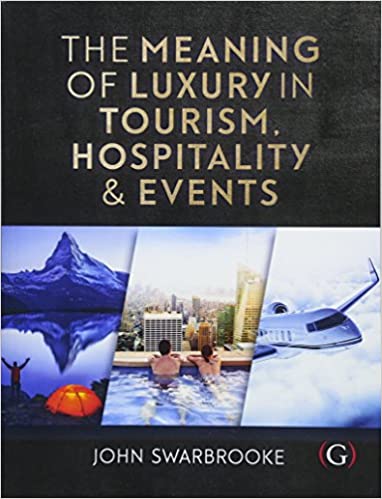
Author: John Swarbrooke
First edition date: January 24, 2018
Goodreads rating : 5/5
Amazon rating : 4.6/5
Price on Amazon : Hardcover $76.20, Paperback $49.67
As the title suggests, this book takes a closer look at the concept of luxury . It takes readers across the tourism industry globally. Its focus is on the concept of luxury in the industry and how it changes the sector . It also takes into account sustainability challenges and technological innovations as factors that change the concept of luxury.
Why we chose it : We chose this book because it features a dozen case studies, thus helping the readers truly understand the impact of a wide range of factors on luxury in tourism .
Things we don’t like : Given that the book mainly focuses on case studies, you might find it hard to go through in one go.
The Elephant Tourism Business
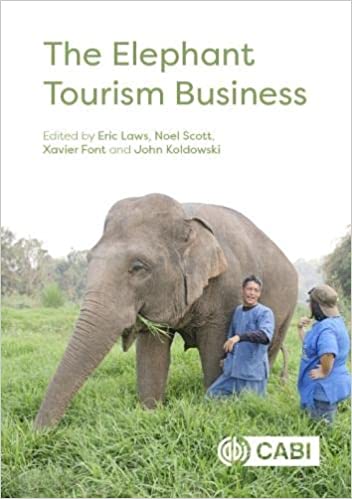
Author: Eric Laws, Noel Scott, Xavier Font, and John Koldowski
First edition date: December 23, 2020
Price on Amazon : Hardcover $12.88
This book is for people involved in elephant tourism, which is a dominant sector in many countries, including India. It brings into perspective the improvements organizations can make to enhance tourists’ experiences of elephant tourism. The book also outlines the marketing strategies elephant tourism organizations can use to efficiently promote activities.
Why we chose it : This book provides a better understanding of the elephant tourism business, and it’s the only one of its kind published in recent years. Given how important this tourism sector is in some countries, we decide to include it as it addresses several key aspects of elephant tourism.
Things we don’t like : Many sections of the book are written for veterinarians and policymakers, making finding chapters relevant to tourism organizations somewhat hard.
Tourism Theory: Concepts, Models, and Systems
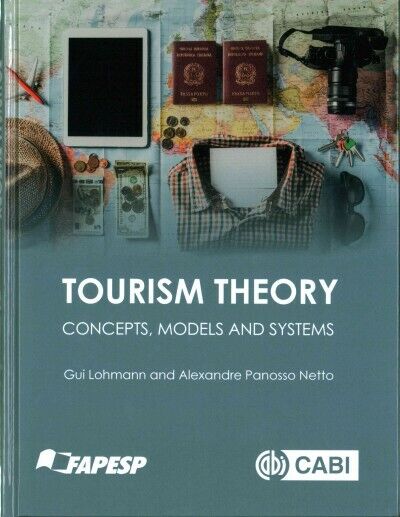
Author: Gui Lohmann and Alexandre Panosso Netto
First edition date: December 19, 2016
Price on Amazon : Hardcover $107.05, Paperback $63.12
This book addresses tourism as a field of study. It covers all essential aspects of tourism, ranging from concepts and disciplines to market analysis and marketing. The book also addresses the most common multi-destination travel patterns and high-season destination management.
Why we chose it : This must-have book covers everything you need to know about tourism theory. We decided to add it to our list because it’s one of the most complete books on this subject. It makes finding relevant information easy thanks to encyclopedic cross-referencing.
Things we don’t like : Although quite big, the book is only an introduction to tourism theory, and readers will need to explore other resources to get additional context to better understand some concepts.
The Good Company
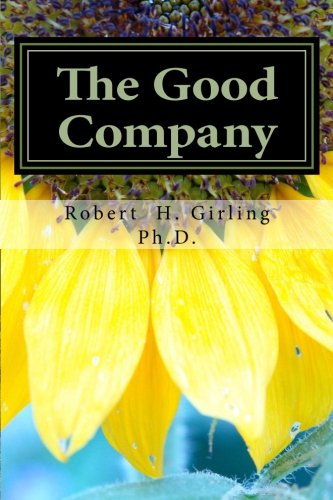
Author: Robert Girling
First edition date: March 28, 2012
Number of editions: 2
Goodreads rating : 4.5/5
Price on Amazon : Paperback $6.32
The Good Company is a book that features successful companies that are overcoming environmental challenges by implementing emerging technologies. It also highlights the aspects that make a good company and why giving back to the community is essential.
Why we chose it : Although it’s not tourism industry-specific, we decided to add this book to our list because organizations in the tourism sector can play a vital role in making our planet better. This book can help tour operators and hotel owners build better companies for their employees, consumers, and society as a whole.
Things we don’t like : The book features in-depth key studies of companies making the planet a better place, but the companies included are from the manufacturing and service sectors. There isn’t a single example of a company from the travel industry.
While there are many books about the tourism sector, the 12 we included in our list are definitely must-read books in 2022. We made sure to add books that address fairly different topics and provide insights into the best practices and developments in the industry . Since you might have specific needs and preferences, you should choose a book that can help you find the answers you are looking for .
Subscribe to our newsletter
Yay you are now subscribed to our newsletter.
Cristóbal Reali, VP of Global Sales at Mize, with over 20 years of experience, has led high-performance teams in major companies in the tourism industry, as well as in the public sector. He has successfully undertaken ventures, including a DMO and technology transformation consulting. In his role at Mize, he stands out not only for his analytical and strategic ability but also for effective leadership. He speaks English, Spanish, Portuguese, and Italian. He holds a degree in Economics from UBA, complementing his professional training at Harvard Business School Online.
Mize is the leading hotel booking optimization solution in the world. With over 170 partners using our fintech products, Mize creates new extra profit for the hotel booking industry using its fully automated proprietary technology and has generated hundreds of millions of dollars in revenue across its suite of products for its partners. Mize was founded in 2016 with its headquarters in Tel Aviv and offices worldwide.
Related Posts

Unveiling the 13 Hottest Travel Trends of 2024
13 min. No one knows better than you how dynamic the realm of travel is. Dynamic shifts brought by technological strides, ever-changing traveler priorities, and global events are the new normal in 2024. How do you navigate this landscape that keeps transforming? You should familiarize yourself with the very travel trends that shape the world […]

30 Most Important Travel Industry Events for 2024
30 min. Many travel industry experts believe that travel industry events play a pivotal role in shaping the future of the travel industry. Why is this so? It’s because these events foster collaboration, networking, and innovation among key stakeholders in this vertical. As a platform for sharing best practices, trends, and insights, travel industry events […]

Empowering Equality: Mize Leads the Way in Travel Technology
7 min. Are we all equal? Are we all equally represented in the business world? In some professional sectors, there might still be some under-representation of women, minorities, and the LGBTQIA+ community. The tech sphere is no different, but is the travel tech sector a spark of hope? As the business world becomes more diverse, […]

100 Must-Read Travel Books
Rebecca Hussey
Rebecca holds a PhD in English and is a professor at Norwalk Community College in Connecticut. She teaches courses in composition, literature, and the arts. When she’s not reading or grading papers, she’s hanging out with her husband and son and/or riding her bike and/or buying books. She can't get enough of reading and writing about books, so she writes the bookish newsletter "Reading Indie," focusing on small press books and translations. Newsletter: Reading Indie Twitter: @ofbooksandbikes
View All posts by Rebecca Hussey
Real travel is awesome when we can manage it, but sometimes we just have to travel from our armchairs, right? When armchair travel is the most we can do, it’s good to have many reading options from which to choose. So I put together a list of 100 of the best travel books that will take you around the world without requiring any more effort than lifting your hand to turn the pages.
I did my best to organize these by geographical region, although sometimes that’s tricky since there are many ways to divide up the regions of the world. And I had to include a large category of “various locations” since some travel books really do take you everywhere. Within the geographical region, the books are organized chronologically.
I hope you will find some books on this list that pique your interest and can help you find adventures from the safety of your own home. Or maybe they will inspire you to go on a journey, or prepare you for an upcoming trip. Maybe you will read one of these on an airplane. Whatever the case, if travel is something that interests you, I hope this list helps you find new books to love.
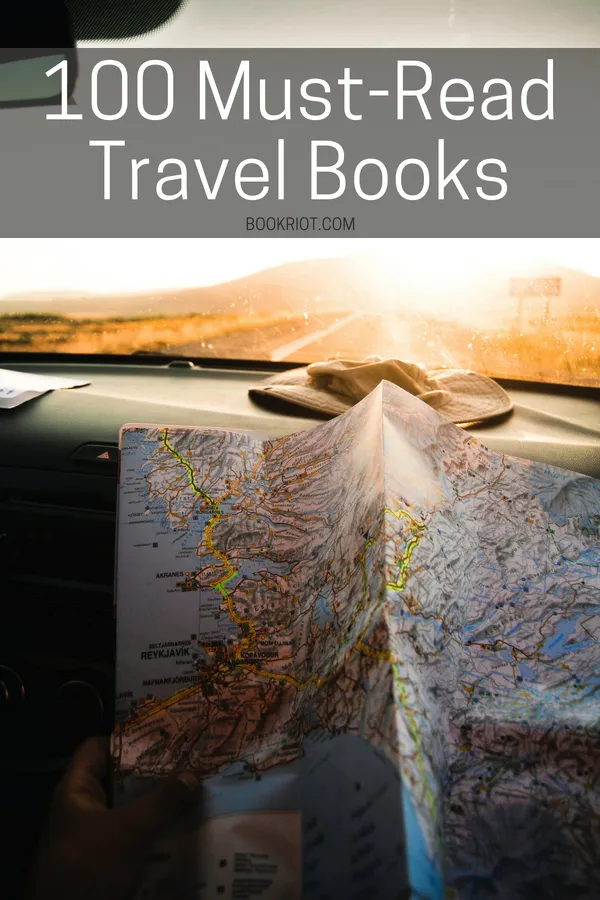
Best Travel Books Set In Europe
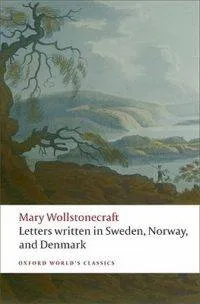
Mary Wollstonecraft, Letters Written During a Short Residence in Sweden, Norway, and Denmark (1796)
“ Originally published in 1796, Mary Wollstonecraft’s account of her trip to Denmark, Norway, and Sweden, is compelling both in its picture of countries rarely visited in Regency times and insights into Mary’s personal life. ”
Robert Louis Stevenson, Travels with a Donkey in the Cévennes (1879)
“ Ever hopeful of encountering the adventure he yearned for and raising much needed finance at the start of his writing career, Stevenson embarked on the120 mile, 12 day trek and recorded his experiences in this journal.”
Edith Wharton, A Motor-Flight Through France (1908)
“ Shedding the turn-of-the-century social confines she felt existed for women in America, Edith Wharton set out in the newly invented ‘motor-car’ to explore the cities and countryside of France.”
D.H. Lawrence, Sea and Sardinia (1921)
“ Written after the First World War when he was living in Sicily, Sea and Sardinia records Lawrence’s journey to Sardinia and back in January 1921. It reveals his response to a new landscape and people and his ability to transmute the spirit of place into literary art.”
George Orwell, Down and Out in Paris and London (1933)
“ This unusual fictional account – in good part autobiographical – narrates without self-pity and often with humor the adventures of a penniless British writer among the down-and-out of two great cities. ”
Rebecca West, Black Lamb and Grey Falcon (1941)
“ Written on the brink of World War II, Rebecca West’s classic examination of the history, people, and politics of Yugoslavia illuminates a region that is still a focus of international concern .”
Mary McCarthy, The Stones of Florence (1956)
“ Mary McCarthy offers a unique history of Florence, from its inception to the dominant role it came to play in the world of art, architecture, and Italian culture, that captures the brilliant Florentine spirit and revisits the legendary figures Dante, Michelangelo, Machiavelli, and others who exemplify it so iconically.”
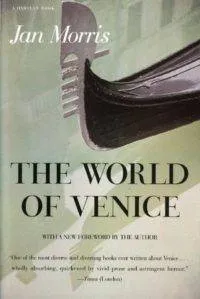
Jan Morris, The World of Venice (1960)
“ Often hailed as one of the best travel books ever written, Venice is neither a guide nor a history book, but a beautifully written immersion in Venetian life and character, set against the background of the city’s past. ”
Patrick Leigh Fermor, A Time of Gifts (1977)
“ In 1933, at the age of 18, Patrick Leigh Fermor set out on an extraordinary journey by foot – from the Hook of Holland to Constantinople. A Time of Gifts is the first volume in a trilogy recounting the trip, and takes the reader with him as far as Hungary.”
Tété-Michel Kpomassie, An African in Greenland (1981)
“ Tété-Michel Kpomassie was a teenager in Togo when he discovered a book about Greenland—and knew that he must go there. Working his way north over nearly a decade, Kpomassie finally arrived in the country of his dreams. ”
Peter Mayle, A Year in Provence (1989)
“ In this witty and warm-hearted account, Peter Mayle tells what it is like to realize a long-cherished dream and actually move into a 200-year-old stone farmhouse in the remote country of the Lubéron with his wife and two large dogs. ”
Frances Mayes, Under the Tuscan Sun (1996)
“ Frances Mayes—widely published poet, gourmet cook, and travel writer—opens the door to a wondrous new world when she buys and restores an abandoned villa in the spectacular Tuscan countryside. ”
Adam Gopnik, Paris to the Moon (2000)
“ Paris. The name alone conjures images of chestnut-lined boulevards, sidewalk cafés, breathtaking façades around every corner–in short, an exquisite romanticism that has captured the American imagination for as long as there have been Americans.”
Lori Tharps , Kinky Gazpacho: Life, Love & Spain (2008)
“ Magazine writer and editor Lori Tharps was born and raised in the comfortable but mostly White suburbs of Milwaukee, Wisconsin, where she was often the only person of color in her school and neighborhood. At an early age, Lori decided that her destiny would be discovered in Spain. ”
Sue Monk Kidd and Ann Kidd Taylor, Traveling with Pomegranates: A Mother-Daughter Story (2009)
“ Between 1998 and 2000, Sue and Ann travel throughout Greece and France. Sue, coming to grips with aging, caught in a creative vacuum, longing to reconnect with her grown daughter, struggles to enlarge a vision of swarming bees into a novel. Ann, just graduated from college, heartbroken and benumbed by the classic question about what to do with her life, grapples with a painful depression. ”
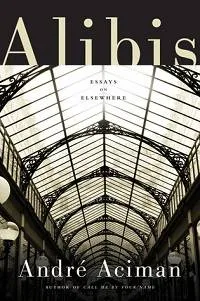
André Aciman, Alibis: Essays on Elsewhere (2011)
“ From beautiful and moving pieces about the memory evoked by the scent of lavender; to meditations on cities like Barcelona, Rome, Paris, and New York; to his sheer ability to unearth life secrets from an ordinary street corner, Alibis reminds the reader that Aciman is a master of the personal essay. ”
Sarah Moss, Names for the Sea: Strangers in Iceland (2012)
“ Novelist Sarah Moss had a childhood dream of moving to Iceland, sustained by a wild summer there when she was nineteen. In 2009, she saw an advertisement for a job at the University of Iceland and applied on a whim, despite having two young children and a comfortable life in an English cathedral city.”
Robert Macfarlane, The Old Ways: A Journey on Foot (2012)
“ In this exquisitely written book, Robert Macfarlane sets off from his Cambridge, England, home to follow the ancient tracks, holloways, drove roads, and sea paths that crisscross both the British landscape and its waters and territories beyond. ”
Best Travel Books Set In Latin America
Zora Neale Hurston, Tell My Horse: Voodoo and Life in Haiti and Jamaica (1938)
“ Based on Zora Neale Hurston’s personal experience in Haiti and Jamaica, where she participated as an initiate rather than just an observer of voodoo practices during her visits in the 1930s, this travelogue into a dark world paints a vividly authentic picture of ceremonies and customs and superstitions of great cultural interest. ”
Sybille Bedford, A Visit to Don Otavio (1953)
“ In the mid-1940s, Sybille Bedford set off from Grand Central Station for Mexico, accompanied by her friend E., a hamper of food and drink (Virginia ham, cherries, watercress, a flute of bread, Portuguese rosé), books, a writing board, and paper. Her resulting travelogue captures the rich and violent beauty of the country as it was then. ”
V.S. Naipaul, The Middle Passage , (1962)
“ In 1960 the government of Trinidad invited V. S. Naipaul to revisit his native country and record his impressions. In this classic of modern travel writing he has created a deft and remarkably prescient portrait of Trinidad and four adjacent Caribbean societies–countries haunted by the legacies of slavery and colonialism .”
Bruce Chatwin, In Patagonia (1977)
“ An exhilarating look at a place that still retains the exotic mystery of a far-off, unseen land, Bruce Chatwin’s exquisite account of his journey through Patagonia teems with evocative descriptions, remarkable bits of history, and unforgettable anecdotes.”
Paul Theroux, The Old Patagonian Express: By Train Through the Americas (1979)
“ Beginning his journey in Boston, where he boarded the subway commuter train, and catching trains of all kinds on the way, Paul Theroux tells of his voyage from ice-bound Massachusetts and Illinois to the arid plateau of Argentina’s most southerly tip. ”
Salman Rushdie, The Jaguar Smile: A Nicaraguan Journey (1987)
“ In this brilliantly focused and haunting portrait of the people, the politics, the land, and the poetry of Nicaragua, Salman Rushdie brings to the forefront the palpable human facts of a country in the midst of a revolution. ”
Mary Morris, Nothing to Declare: Memoirs of a Woman Traveling Alone (1987)
“ Traveling from the highland desert of northern Mexico to the steaming jungles of Honduras, from the seashore of the Caribbean to the exquisite highlands of Guatemala, Mary Morris, a celebrated writer of both fiction and nonfiction, confronts the realities of place, poverty, machismo, and selfhood. ”
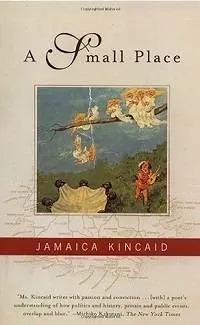
Jamaica Kincaid, A Small Place (1988)
“ Lyrical, sardonic, and forthright, A Small Place magnifies our vision of one small place with Swiftian wit and precision. Jamaica Kincaid’s expansive essay candidly appraises the ten-by-twelve-mile island in the British West Indies where she grew up, and makes palpable the impact of European colonization and tourism. ”
Isabel Allende, My Invented Country: A Nostalgic Journey Through Chile (2003)
“ Isabel Allende evokes the magnificent landscapes of her country; a charming, idiosyncratic Chilean people with a violent history and an indomitable spirit, and the politics, religion, myth, and magic of her homeland that she carries with her even today. ”
Best Travel Books Set In North America
Olaudah Equiano, The Interesting Narrative of the Life of Olaudah Equiano (1789)
“ Widely admired for its vivid accounts of the slave trade, Olaudah Equiano’s autobiography — the first slave narrative to attract a significant readership — reveals many aspects of the eighteenth-century Western world through the experiences of one individual. ”
Isabella Bird, A Lady’s Life in the Rocky Mountains (1879)
“ Bird was born in 1831 in Cheshire, England, and became one of a distinguished group of female travellers famous in the nineteenth century–a time when it was considered that a lady’s place should be confined to the home. Isabella travelled and explored the world extensively and became a notable writer and natural historian.”
John Steinbeck, Travels with Charley in Search of America (1962)
“ In September 1960, John Steinbeck embarked on a journey across America. He felt that he might have lost touch with the country, with its speech, the smell of its grass and trees, its color and quality of light, the pulse of its people.”
Edward Abbey, Desert Solitaire (1968)
“ This is a rare view of a quest to experience nature in its purest form — the silence, the struggle, the overwhelming beauty. But this is also the gripping, anguished cry of a man of character who challenges the growing exploitation of the wilderness by oil and mining interests, as well as by the tourist industry. ”
Robert Pirsig, Zen and the Art of Motorcycle Maintenance: An Inquiry into Values (1974)
“ A narration of a summer motorcycle trip undertaken by a father and his son, the book becomes a personal and philosophical odyssey into fundamental questions of how to live. ”
Edmund White, States of Desire: Travels in Gay America (1980)
“ In this city-by-city description of the way homosexual men lived in the late seventies, Edmund White gives us a picture of Gay America that will surprise gay and straight readers alike.”
William Least Heat-Moon, Blue Highways: A Journey into America (1982)
“ William Least Heat-Moon set out with little more than the need to put home behind him and a sense of curiosity … His adventures, his discoveries, and his recollections of the extraordinary people he encountered along the way amount to a revelation of the true American experience.”
Gretel Ehrlich, The Solace of Open Spaces (1984)
“ Poet and filmmaker Gretel Ehrlich went to Wyoming in 1975 to make the first in a series of documentaries when her partner died. Ehrlich stayed on and found she couldn’t leave. The Solace of Open Spaces is a chronicle of her first years on “the planet of Wyoming,” a personal journey into a place, a feeling, and a way of life. ”
Jonathan Raban, Bad Land: An American Romance (1985)
“ In towns named Terry, Calypso, and Ismay (which changed its name to Joe, Montana, in an effort to attract football fans), and in the landscape in between, Raban unearths a vanished episode of American history, with its own ruins, its own heroes and heroines, its own hopeful myths and bitter memories. ”
Jon Krakauer, Into the Wild (1996)
“ In April 1992 a young man from a well-to-do family hitchhiked to Alaska and walked alone into the wilderness north of Mt. McKinley. His name was Christopher Johnson McCandless. He had given $25,000 in savings to charity, abandoned his car and most of his possessions, burned all the cash in his wallet, and invented a new life for himself. ”
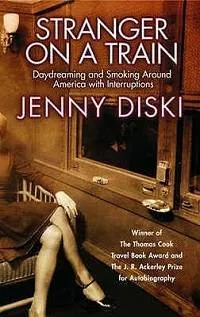
Jenny Diski, Stranger on a Train: Daydreaming and Smoking Around America with Interruptions (2002)
“ Using two cross-country trips on Amtrak as her narrative vehicles, British writer Jenny Diski connects the humming rails, taking her into the heart of America with the track-like scars leading back to her own past. ”
Rebecca Solnit, A Field Guide to Getting Lost (2005)
“ A Field Guide to Getting Lost draws on emblematic moments and relationships in Solnit’s own life to explore the issues of wandering, being lost, and the uses of the unknown. The result is a distinctive, stimulating, and poignant voyage of discovery. ”
Sarah Vowell, Assassination Vacation (2005)
“ With Assassination Vacation, [Vowell] takes us on a road trip like no other—a journey to the pit stops of American political murder and through the myriad ways they have been used for fun and profit, for political and cultural advantage. ”
Cheryl Strayed, Wild: From Lost to Found on the Pacific Crest Trail (2012)
“ At twenty-two, Cheryl Strayed thought she had lost everything. In the wake of her mother’s death, her family scattered and her own marriage was soon destroyed. Four years later, with nothing more to lose, she made the most impulsive decision of her life.”
Suzanne Roberts, Almost Somewhere: Twenty-Eight Days on the John Muir Trail (2012)
“ It was 1993, Suzanne Roberts had just finished college, and when her friend suggested they hike California’s John Muir Trail, the adventure sounded like the perfect distraction from a difficult home life and thoughts about the future. But she never imagined that the twenty-eight-day hike would change her life. ”
Gloria Steinem, My Life on the Road (2015)
“ Gloria Steinem—writer, activist, organizer, and one of the most inspiring leaders in the world—now tells a story she has never told before, a candid account of how her early years led her to live an on-the-road kind of life, traveling, listening to people, learning, and creating change. ”
Best Travel Books Set In Asia
Matsuo Bashō, The Narrow Road to the Deep North (1689)
“ In later life Basho turned to Zen Buddhism, and the travel sketched in this volume reflect his attempts to cast off earthly attachments and reach out to spiritual fulfillment. The sketches are written in the ‘haibun’ style–a linking of verse and prose. ”
Alexandra David-Néel, My Journey to Lhasa (1927)
“ In order to penetrate Tibet and reach Lhasa, she used her fluency of Tibetan dialects and culture, disguised herself as a beggar with yak hair extensions and inked skin and tackled some of the roughest terrain and climate in the World.”
Eric Newby, A Short Walk in the Hindu Kush (1958)
“ No mountaineer, Newby set out with a friend to explore the formidable peaks of the Nuristan Mountains in northeast Afghanistan. His witty, unorthodox report is packed with incidents both ghastly and ecstatic as he takes us where few Western feet have trod.”
Peter Matthiessen, The Snow Leopard (1978)
“ When Matthiessen went to Nepal to study the Himalayan blue sheep and, possibly, to glimpse the rare and beautiful snow leopard, he undertook his five-week trek as winter snows were sweeping into the high passes. This is a radiant and deeply moving account of a ‘true pilgrimage, a journey of the heart.'”
Michael Ondaatje, Running in the Family (1982)
“ In the late 1970s Ondaatje returned to his native island of Sri Lanka. As he records his journey through the drug-like heat and intoxicating fragrances of that ‘pendant off the ear of India,’ Ondaatje simultaneously retraces the baroque mythology of his Dutch-Ceylonese family. ”
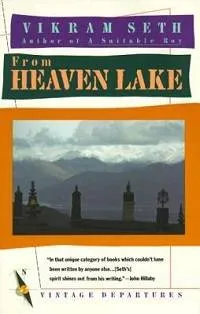
Vikram Seth, From Heaven Lake: Travels Through Sinkian and Tibet (1983)
“ After two years as a postgraduate student at Nanjing University in China, Vikram Seth hitch-hiked back to his home in New Delhi, via Tibet. From Heaven Lake is the story of his remarkable journey and his encounters with nomadic Muslims, Chinese officials, Buddhists and others. ”
Christina Dodwell, Traveller in China (1985)
“ Christina Dodwell s wanderlust, combined with her inventive and unorthodox methods of travel and her unquenchable curiosity about people, make her the ideal guide to the remoter parts of China’s vast territory. ”
Pico Iyer, Video Night in Kathmandu (1988)
“ Why did Dire Straits blast out over Hiroshima, Bruce Springsteen over Bali and Madonna over all? The author was eager to learn where East meets West, how pop culture and imperialism penetrated through the world’s most ancient civilisations. Then, the truths he began to uncover were more startling, subtle, and more complex than he ever anticipated. ”
Pankaj Mishra, Butter Chicken in Ludhiana: Travels in Small Town India (1995)
“ From a convent-educated beauty pageant aspirant to small shopkeepers planning their vacation in London, Pankaj Mishra paints a vivid picture of a people rushing headlong to their tryst with modernity. ”
Andrew Pham, Catfish and Mandala: A Two-Wheeled Voyage Through the Landscape and Memory of Vietnam (1999)
“ Catfish and Mandala is the story of an American odyssey—a solo bicycle voyage around the Pacific Rim to Vietnam—made by a young Vietnamese-American man in pursuit of both his adopted homeland and his forsaken fatherland.”
Ma Jian, Red Dust: A Path Through China (2001)
“ In 1983, at the age of thirty, dissident artist Ma Jian finds himself divorced by his wife, separated from his daughter, betrayed by his girlfriend, facing arrest for ‘Spiritual Pollution,’ and severely disillusioned with the confines of life in Beijing. So with little more than a change of clothes and two bars of soap, Ma takes off to immerse himself in the remotest parts of China. ”
Suketu Mehta , Maximum City: Bombay Lost and Found (2004)
“ The book combines elements of memoir, travel writing as well as socio-political analysis of the history and people of Mumbai. Mehta writes as a person who is at one level outsider to this magnificent city and on the other hand is the one who is born here and has lived his childhood in the city then known as Bombay. ”
Faith Adiele, Meeting Faith: The Forest Journals of a Black Buddhist Nun (2004)
“ Reluctantly leaving behind Pop Tarts and pop culture to battle flying rats, hissing cobras, forest fires, and decomposing corpses, Faith Adiele shows readers in this personal narrative, with accompanying journal entries, that the path to faith is full of conflicts for even the most devout. ”
Barbara Demick, Nothing to Envy: Ordinary Lives in North Korea (2009)
“ Award-winning journalist Barbara Demick follows the lives of six North Korean citizens over fifteen years–a chaotic period that saw the death of Kim Il-sung, the rise to power of his son Kim Jong-il, and a devastating famine that killed one-fifth of the population. ”
Katherine Boo, Behind the Beautiful Forevers (2012)
“ In this brilliant, breathtaking book by Pulitzer Prize winner Katherine Boo, a bewildering age of global change and inequality is made human through the dramatic story of families striving toward a better life in Annawadi, a makeshift settlement in the shadow of luxury hotels near the Mumbai airport. ”
Best Travel Books Set In Africa
Mary Kingsley, Travels in West Africa (1897)
“ Upon her sudden freedom from family obligations, a sheltered Victorian spinster traded her stifling middle-class existence for an incredible expedition in the Congo. ”
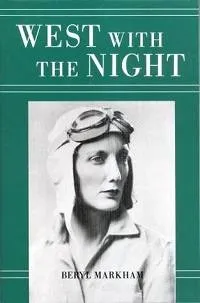
Beryl Markham, West with the Night (1942)
“[Markham’s] successes and her failures—and her deep, lifelong love of the ‘soul of Africa’—are all chronicled here with wrenching honesty and agile wit. Hailed by National Geographic as one of the greatest adventure books of all time, West with the Night is the sweeping account of a fearless and dedicated woman. ”
Maya Angelou, All God’s Children Need Traveling Shoes (1986)
“ Once again, the poet casts her spell as she resumes one of the greatest personal narratives of our time. In this continuation, Angelou relates how she joins a “colony” of Black American expatriates in Ghana–only to discover no one ever goes home again. ”
Eddy L. Harris, Native Stranger: A Black American’s Journey into the Heart of Africa (1992)
“ Recounting his journey into the heart of Africa, an African American describes his encounters with beggars and bureaucrats, his visit to Soweto, a night in a Liberian jail cell, and more. ”
Philip Gourevitch, We Wish to Inform You That Tomorrow We Will Be Killed with Our Families (1998)
“ Philip Gourevitch’s haunting work is an anatomy of the killings in Rwanda, a vivid history of the genocide’s background, and an unforgettable account of what it means to survive in its aftermath. ”
Colleen McElroy, Over the Lip of the World: Among the Storytellers of Madagascar (1999)
“ McElroy’s tale of an African American woman’s travels among the people of Madagascar is told with wit, insight, and humor. Throughout it she interweaves English translations of Malagasy stories of heroism and morality, royalty and commoners, love and revenge, and the magic of tricksters and shapechangers. ”
Charlayne Hunter-Gault, New News Out of Africa: Uncovering Africa’s Renaissance (2006)
“ In New News Out of Africa , this eminent reporter offers a fresh and surprisingly optimistic assessment of modern Africa, revealing that there is more to the continent than the bad news of disease, disaster, and despair.”
Noo Saro-Wiwa, Looking for Transwonderland: Travels in Nigeria (2012)
“ She finds [Nigeria] as exasperating as ever, and frequently despairs at the corruption and inefficiency she encounters. But she also discovers that it is far more beautiful and varied than she had ever imagined, with its captivating thick tropical rainforest and ancient palaces and monuments.”
Best Travel Books Set In The South Pacific
Robyn Davidson, Tracks: A Woman’s Solo Trek Across 1700 Miles of Australian Outback (1980)
“ Robyn Davidson’s opens the memoir of her perilous journey across 1,700 miles of hostile Australian desert to the sea with only four camels and a dog for company with the following words: ‘I experienced that sinking feeling you get when you know you have conned yourself into doing something difficult and there’s no going back.'”
Dea Birkett, Serpent in Paradise (1997)
“ Acclaimed British travel writer and journalist Dea Birkett, obsessed like many with the island’s image as a secluded Eden and its connection to the mysterious and intriguing Bounty legend, traveled across the Pacific on a cargo ship and became one of the very few outsiders permitted to land on Pitcairn. ”
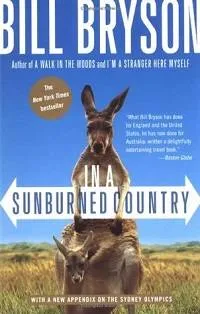
Bill Bryson, In a Sunburned Country (2000)
“ Despite the fact that Australia harbors more things that can kill you in extremely nasty ways than anywhere else, including sharks, crocodiles, snakes, even riptides and deserts, Bill Bryson adores the place, and he takes his readers on a rollicking ride far beyond that beaten tourist path. ”
Kira Salak, Four Corners: A Journey into the Heart of Papua, New Guinea (2001)
“ Traveling by dugout canoe and on foot, confronting the dangers and wonders of a largely untouched world, [Salak] became the first woman to traverse this remote country and write about it. ”
Best Travel Books Set In The Middle East/North Africa
Mary Wortley Montagu, The Turkish Embassy Letters (1716)
“ Her lively letters offer insights into the paradoxical freedoms conferred on Muslim women by the veil, the value of experimental work by Turkish doctors on inoculation, and the beauty of Arab poetry and culture. ”
Robert Byron, The Road to Oxiana (1937)
“ In 1933 the delightfully eccentric Robert Byron set out on a journey through the Middle East via Beirut, Jerusalem, Baghdad and Teheran to Oxiana -the country of the Oxus, the ancient name for the river Amu Darya which forms part of the border between Afghanistan and the Soviet Union. ”
Isabelle Eberhardt, The Nomad: The Diaries of Isabelle Eberhardt (1987, written in late 19th century)
“ Eberhardt’s journal chronicles the daring adventures of a late 19th- century European woman who traveled the Sahara desert disguised as an Arab man and adopted Islam.”
Sara Suleri, Meatless Days (1989)
“ In this finely wrought memoir of life in postcolonial Pakistan, Suleri intertwines the violent history of Pakistan’s independence with her own most intimate memories—of her Welsh mother; of her Pakistani father, prominent political journalist Z.A. Suleri; of her tenacious grandmother Dadi and five siblings; and of her own passage to the West. ”
Amitav Ghosh, In an Antique Land: History in the Guise of a Traveler’s Tale (1993)
“ Interspersing his quest with accounts of his stay in ‘Masr’ and the people he met, Ghosh weaves together a narrative packed with exuberant detail, exposing ties that have bound together India and Egypt, and Hindus and Muslims and Jews, from the Crusades to Operation Desert Storm.”
Rory Stewart, The Places in Between (2004)
“ In January 2002 Rory Stewart walked across Afghanistan–surviving by his wits, his knowledge of Persian dialects and Muslim customs, and the kindness of strangers … Along the way Stewart met heroes and rogues, tribal elders and teenage soldiers, Taliban commanders and foreign-aid workers. ”
Colin Thubron, Shadow of the Silk Road (2007)
“ Making his way by local bus, truck, car, donkey cart, and camel, Colin Thubron covered some seven thousand miles in eight months out of the heart of China into the mountains of Central Asia, across northern Afghanistan and the plains of Iran into Kurdish Turkey and explored an ancient world in modern ferment. ”
Gertrude Bell, A Woman in Arabia: The Writings of the Queen of the Desert (2015, written in early 20th century)
“ This is the epic story of Bell’s life, told through her letters, military dispatches, diary entries, and other writings. It offers a unique and intimate look behind the public mask of a woman who shaped nations. ”

Lynsey Addario, It’s What I Do: A Photographer’s Life of Love and War (2015)
“ Lynsey Addario was just finding her way as a young photographer when September 11 changed the world. One of the few photojournalists with experience in Afghanistan, she gets the call to return and cover the American invasion.”
Best Travel Books Set In Arctic/Antarctic
Ernest Shackleton, South: The Story of Shackleton’s Last Expedition, 1914-1917 (1919)
“ In an epic struggle of man versus the elements, Shackleton leads his team on a harrowing quest for survival over some of the most unforgiving terrain in the world.”
Barry Lopez, Arctic Dreams (2001)
“ Lopez offers a thorough examination of this obscure world-its terrain, its wildlife, its history of Eskimo natives and intrepid explorers who have arrived on their icy shores. But what turns this marvelous work of natural history into a breathtaking study of profound originality is his unique meditation on how the landscape can shape our imagination, desires, and dreams. ”
Sara Wheeler, Terra Incognita: Travels in Antarctica (1996)
“ Terra Incognita is a meditation on the landscape, myths and history of one of the remotest parts of the globe, as well as an encounter with the international temporary residents of the region – living in close confinement despite the surrounding acres of white space – and the mechanics of day-to-day life in extraordinary conditions. ”
Gretchen Legler, On the Ice: An Intimate Portrait of Life at McMurdo Station, Antarctica (2005)
“ Sent to Antarctica as an observer by the National Science Foundation, Gretchen Legler arrives at McMurdo Station in midwinter, a time of -70 degree temperatures and months of near-total darkness. ”
Various Locations
Ibn Battuta, The Travels of Ibn Battuta , (14th century)
“ Ibn Battutah—ethnographer, bigrapher, anecdotal historian and occasional botanist—was just 21 when he set out in 1325 from his native Tangier on a pilgramage to Mecca. He did not return to Morocco for another 29 years, traveling instead through more than 40 countries on the modern map, covering 75,000 miles and getting as far north as the Volga, as far east as China, and as far south as Tanzania. ”
Martha Gellhorn, Travels With Myself and Another (1979): “ Out of a lifetime of travelling, Martha Gellhorn has selected her ‘best horror journeys.’ She bumps through rain-sodden, war-torn China to meet Chiang Kai-Shek, floats listlessly in search of u-boats in the wartime Caribbean and visits a dissident writer in the Soviet Union against her better judgment.”
Barbara Savage, Miles from Nowhere: A Round-The World Bicycle Adventure (1983)
“ This is the story of Barbara and Larry Savage’s sometimes dangerous, often zany, but ultimately rewarding 23,000 miles global bicycle odyssey, which took them through 25 countries in two years.”
Elaine Lee, editor, Go Girl!: The Black Woman’s Book of Travel and Adventure (1997)
“Globe-trotting attorney Lee assembled 52 travel pieces presenting the uncommon perspective of black women, mostly African Americans. Assembled under the headings ‘Back to Africa,’ ‘Sistren Travelin’,’ and ‘Trippin’ All Over the World,’ many initially appeared in popular women’s or travel magazines.”
Cheryl J. Fish, editor, A Stranger in the Village: Two Centuries of African-American Travel Writing (1999)
“ Dispatches, diaries, memoirs, and letters by African-American travelers in search of home, justice, and adventure-from the Wild West to Australia. ”
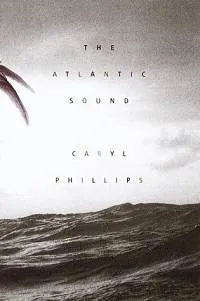
Caryl Phillips, The Atlantic Sound (2000)
“ Liverpool, England; Accra, Ghana; Charleston, South Carolina. These were the points of the triangle forming the major route of the transatlantic slave trade. And these are the cities that acclaimed author Caryl Phillips explores–physically, historically, psychologically–in this wide-ranging meditation on the legacy of slavery. ”
Alain de Botton, The Art of Travel (2002)
“ Any Baedeker will tell us where we ought to travel, but only Alain de Botton will tell us how and why … de Botton considers the pleasures of anticipation; the allure of the exotic, and the value of noticing everything from a seascape in Barbados to the takeoffs at Heathrow.”
Geoff Dyer, Yoga for People Who Can’t Be Bothered to Do It (2003)
“ As he travels from Amsterdam to Cambodia, Rome to Indonesia, Libya to Burning Man in the Black Rock Desert, Dyer flounders about in a sea of grievances, with fleeting moments of transcendental calm his only reward for living in a perpetual state of motion. ”
Susan Orlean, My Kind of Place: Travel Stories from a Woman Who’s Been Everywhere (2004)
“ In this irresistible collection of adventures far and near, Orlean conducts a tour of the world via its subcultures, from the heart of the African music scene in Paris to the World Taxidermy Championships in Springfield, Illinois–and even into her own apartment, where she imagines a very famous houseguest taking advantage of her hospitality. ”
Ryszard Kapuściński , Travels with Herodotus (2004)
“J ust out of university in 1955, Kapuscinski told his editor that he’d like to go abroad. Dreaming no farther than Czechoslovakia, the young reporter found himself sent to India. Wide-eyed and captivated, he would discover in those days his life’s work—to understand and describe the world in its remotest reaches, in all its multiplicity.”
Elizabeth Gilbert, Eat, Pray, Love (2006)
“ Setting out for a year to study three different aspects of her nature amid three different cultures, Gilbert explored the art of pleasure in Italy and the art of devotion in India, and then a balance between the two on the Indonesian island of Bali. ”
Tahir Shah, Travels with Myself (2011)
“ Travels with Myself is a collection of selected writings by Tahir Shah, acclaimed Anglo-Afghan author and champion of the intrepid. Written over twenty years, the many pieces form an eclectic treasury of stories from Latin America, Asia, Africa, and beyond.
Elisabeth Eaves, Wanderlust: A Love Affair with Five Continents (2011)
“ Spanning 15 years of travel, beginning when she is a sophomore in college, Wanderlust documents Elisabeth Eaves’s insatiable hunger for the rush of the unfamiliar and the experience of encountering new people and cultures. ”
Paula Young Lee, Deer Hunting in Paris: A Memoir of God, Guns, and Game Meat (2013)
“ What happens when a Korean-American preacher’s kid refuses to get married, travels the world, and quits being vegetarian? She meets her polar opposite on an online dating site while sitting at a café in Paris, France and ends up in Paris, Maine, learning how to hunt. ”
Emily Raboteau, Searching for Zion: The Quest for Home in the African Diaspora (2013)
“ On her ten-year journey back in time and around the globe, through the Bush years and into the age of Obama, Raboteau wanders to Jamaica, Ethiopia, Ghana, and the American South to explore the complex and contradictory perspectives of Black Zionists. ”
Amanda Epe, A Fly Girl: Travel Tales of an Exotic British Airways Cabin Crew (2014)
“ A Fly Girl gives insight to the highs and lows in the world of a former BA cabin crew, in an intriguing travel writing memoir. In the global landscape the memoirist meticulously documents personal adventures, social structures and political history throughout her daring and exciting expeditions.”
Robert Moor, On Trails: An Exploration (2016)
“ Throughout, Moor reveals how this single topic—the oft-overlooked trail—sheds new light on a wealth of age-old questions: How does order emerge out of chaos? How did animals first crawl forth from the seas and spread across continents?”
What do you think are the best travel books? Check out even more recommendations for travel memoirs here !
You Might Also Like


Inside the Literary Travel Boom
Book butlers! Curated libraries! Custom cruises! Literary-themed vacations are the hot new trend in tourism.
In January, when packing my bags for a “reading retreat” in the Dominican Republic, I agonized about which books to bring. A few days later, bellied up to the beachside bar at the all-inclusive Dreams Macao Beach Punta Cana resort (where, in place of barstools, swings are suspended from the thatched ceiling), I sipped a mojito, cracked open James Salter’s Light Years, a novel I reread annually, and knew that I’d chosen well.
But if I’d had any regrets, summoning a new paperback would’ve been as easy as ringing for a book butler. I was down in the DR to experience Pages in Paradise, a collaboration between the publisher Penguin Random House, Belletrist Book Club (the brainchild of actress Emma Roberts), and Apple Vacations (no relation to the iPhone maker). For readers who like to beach, the retreat left no page unturned. The programming kicked off even before check-in: Ahead of arrival, guests could log in to the resort’s app to reserve beach reads from an on-site library curated by Belletrist. Housed in the airy hotel lobby, the collection included buzzy contemporary fiction by the likes of Zadie Smith and Curtis Sittenfeld. Guests could also order books via room service (or personal butler) anytime or select one from the chic library carts located at the adults-only pool. The property’s various bars featured the “Pages Pour,” a specialty cocktail themed to the program’s inaugural book-of-the-month selection, Jenny Xie’s debut novel, Holding Pattern . They called the drink a gin-fashioned—a fruit-forward riff on the old-fashioned, zippy with pineapple-cinnamon syrup.

Exotic as this tropical gathering of book lovers might have been, it’s just one example of a fast-growing business trend: literary-themed travel. We have the pandemic to thank. Reading surged in the early days of Covid, and the habit stuck as lockdowns eased: The biggest two years on record for print book sales in the U.S. were 2021 and 2022. Hotels and tourism companies, eager to lure back travelers, seized on the surge and began featuring books in their marketing. What began as a travel perk has become a full-blown movement to cater to readers with an explosion of new programming, from big-ticket experiences promising author access to solitary retreats. I know, I know—planning a trip around your reading list may never replace your annual golf weekend, but when else will you get the time to actually enjoy that stack on your nightstand? And if it all sounds like giving yourself homework, don’t worry—there definitely won’t be a quiz, and did I mention the drinks?
As a professional book recommender, the question I’m asked most often is “What book should I bring on my vacation?” But now there’s a new question to consider: What kind of literary vacation should I plan?
Not every reader is content to lie by the pool and read for days on end. Some are looking for a more kinetic experience—one that lets them interact with fellow readers, and even their favorite writers. Enter the “ Gone Girl cruise.” In fall 2022, author Gillian Flynn set sail down the Danube with some of her biggest (and most well-heeled) fans as part of Avalon Waterways’ Storyteller Series, cruises that offer literary travelers a chance to voyage in close quarters with authors and other storytellers. When Flynn tweeted about the cruise, it quickly became a viral sensation. On-board accounts detailed a true-crime extravaganza, with guests returning to their rooms each night to discover blood-spattered notes, themed to Flynn’s novels, on their pillows. Sure, it’s a little dorky—but we’re all fans of something, and if crime novels are your thing, what could be better?
For readers who can’t splash out for getaways abroad, there are literary destinations closer to home, too. In the artsy hamlet of New Hope, Pennsylvania, the historic luxury hotel River House at Odette’s offers Riverside Reading (in partnership with Bedside Reading), a program that pairs complimentary access to a curated library (via digital app or hard copies throughout the hotel) with intimate author experiences. With bookshelves stationed on each floor and authors rolling through seasonally, guests can dip in and out of the programming as they please.
When I visited River House deep in the grips of a harsh Pennsylvania winter, I discovered a reader’s paradise: My room boasted a fireplace, a private balcony, and serene views of the rushing Delaware River. After turndown service, I found a keepsake leather bookmark on my pillow. That evening, a few dozen guests gathered for a talkback with the novelist Jean Hanff Korelitz. In a ballroom festooned with red carnations (a nod to the cover of her latest book, The Latecomers ), Korelitz fielded rapid-fire questions about her inspiration, her writing process, and her hit novel The Plot . After the formal conversation concluded, starstruck guests crowded around her at the bar. “When people come up to you and say, ‘I loved your book,’ that really means something to writers,” Korelitz told me. As the owner of BookTheWriter, a service connecting authors and readers through pop-up book clubs hosted in New York City apartments, Korelitz knows a thing or two about making connections. In the recent boom of literary travel experiences, she sees a broader post-pandemic trend of readers craving the chance to get up close and personal with their favorite writers. “The ways of access to authors have multiplied exponentially,” she said. “I find it to be very inspiring.”
For an early-career author like Xie, who was at Pages in Paradise, seeing her novel highlighted was both exciting and transformative. That’s the thing about literary travel—it allows us to transcend our ordinary lives in more ways than one. “There’s a certain sense that we don’t have the space to read unless we’re traveling or living outside of our day-to-day,” said Xie. “A book takes you outside of your physical environment and your lived experience. Travel does that, too, so they join together in this really beautiful way to truly transport you.” That’s a journey worth taking.
HOW TO PLAN YOUR OWN LITERARY VACATION
Ready to take off on a bookish getaway? Literary travel isn’t “one size fits all,” so whatever type of reader you are, we’ve got a prescription for it. Choose your own adventure below.
For the fan
The Gone Girl cruise is over, but Avalon Waterways isn’t slowing down anytime soon: Its upcoming slate of Storyteller Cruises includes actor Graham McTavish (sailing down the Rhine River) and Outlander phenom Diana Gabaldon (voyaging down the Danube).
For the R&R chaser
Looking for a more relaxed experience? At the Reeds at Shelter Haven, an upscale resort on the Jersey shore, guests can participate in Reeds’ Reads, a seasonal book club featuring guided discussions, with authors sometimes joining via Zoom for Q&A sessions.
For the aspiring writer
Chances are, your favorite author is side-hustling by leading retreats in pastoral Europe. To get in on the action, pay close attention to their social-media feeds, or search for guided trips through an experiential-tourism outlet like TrovaTrip.

@media(max-width: 73.75rem){.css-1ktbcds:before{margin-right:0.4375rem;color:#FF3A30;content:'_';display:inline-block;}}@media(min-width: 64rem){.css-1ktbcds:before{margin-right:0.5625rem;color:#FF3A30;content:'_';display:inline-block;}} Esquire Travels

The 8 Best New Hotels in Paris
The Best New Hotels in the World 2024
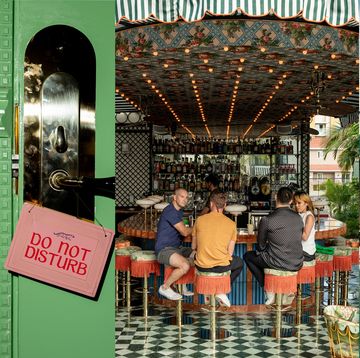
The Lafayette Is Our 2024 New Hotel of the Year
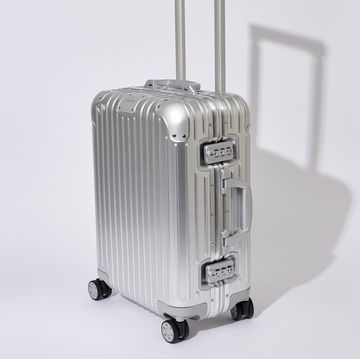
Why the Expensive Suitcase Reigns Supreme

The 6 Best New Hotels in Charleston
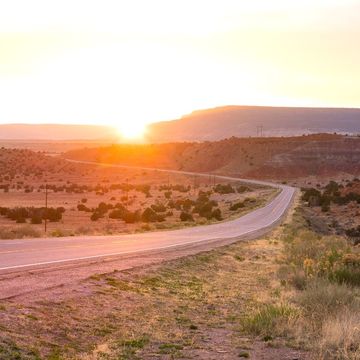
The Tiniest Town in Every State

Inside NYC's Most Expensive Hotel

Nine Orchard Is Our 2023 New Hotel of the Year

Las Ventanas al Paraíso, A Rosewood Resort Review

Our Favorite Hotels of All Time

The Best New Hotels in North America and Beyond
Nomadic Notes
Travel blog and weekly travel newsletter
Top 200 Travel Books

If you are looking for a great travel read I have compiled a list of the worlds top 200 travel books.
What denotes a best or top travel book is a subjective process (unless you are measuring purely on known sales), so this list has been through an editorial process. I have listed my selection methods below.
Travel Book Definition
For the purpose of this list I have defined travel books as personal narratives and historic travel journals. I was keeping travel fiction on this list but I have since removed them and I will make a new list for best travel fiction.
Also not included on the list are travel guide books or history books about cities and countries that aren’t personal narratives.
Some book lists also include books set in places from the perspective of a writer who lives there. I have not included those books. If you are interested in books about place I recommend looking through A year of reading the world , which lists one book for every nation in the world.
I was listing history books but I have now moved those into the travel guides section . For example City of Fortune: How Venice Ruled the Seas can be found in the Venice travel guide, and Vietnam: A History can be found in the Vietnam travel guide.
Travel Book Selection
This list is derived from a combination of books I’ve read, an aggregation of prominent top travel book lists (listed below), books that have been recommended to me, and books that are considered classics of the genre yet that have been overlooked by modern lists.
The list is ordered alphabetically (how do you even rank something so subjective?) and not sorted into sub-categories. This might change out of necessity if the list continues to grow.
In the interest of diversity I have selected only one book per author, otherwise I would have (happily) listed Bill Bryson seven times. If you like what an author writes you can research their back-catalogue for more reading.
While many of these are the books you always see on the top 10 travel books list, there are some obscure titles that I found on random bookshelves that still haven’t made their way to Kindle format. I’m continually adding more to the list as I go. You can leave a comment on the Facebook page if you have any more book suggestions.

My Reading Count
I’ve read over 50 travel books, though not all of them are on this list. Omitted books include authors with multiple book titles (such as the other Bill Bryson books), travel fiction, and books that didn’t make the cut.
My current reading count is 34/200.
List Of The Best Travel Books
A Cook’s Tour: In Search of the Perfect Meal by Anthony Bourdain.
Dodging minefields in Cambodia, diving into the icy waters outside a Russian bath, Bourdain travels the world over in search of the ultimate meal. The only thing Anthony Bourdain loves as much as cooking is traveling, and A Cook’s Tour is the shotgun marriage of his two greatest passions. Inspired by the question, ‘What would be the perfect meal?’, he sets out on a quest for his culinary holy grail.
A Dragon Apparent: Travels in Cambodia, Laos, and Vietnam by Norman Lewis.
Originally published in 1951, it is said that A Dragon Apparent inspired Graham Greene to go to Vietnam and write The Quiet American. Norman Lewis traveled in Indo-China during the precarious last years of the French colonial regime. Much of the charm and grandeur of the ancient native civilizations survived until the devastation of the Vietnam War.
A Field Guide to Getting Lost by Rebecca Solnit.
A Field Guide to Getting Lost draws on emblematic moments and relationships in Solnit’s own life to explore issues of wandering, being lost, and the uses of the unknown. The result is a distinctive, stimulating, and poignant voyage of discovery.
A Fortune-Teller Told Me by Tiziano Terzani.
In 1976 Tiziano Terzani was told by a fortuneteller in Hong Kong that he must not fly 1993 as there will be a grave risk of him dying. In 1993 Terzani took heed to the reading and decided not to fly for the year. As a journalist based in Asia he travelled by land and sea, visiting fortunetellers, oracles, and sorcerers along the way and revealing the superstitious ways of life in Asia.
A Handful of Honey: Away to the Palm Groves of Morocco and Algeria by Annie Hawes.
Aiming to track down a small oasis town deep in the Sahara, some of whose generous inhabitants came to her rescue on a black day in her adolescence, Annie Hawes leaves her home in the olive groves of Italy and sets off along the south coast of the Mediterranean, travelling through Morocco and Algeria.
A House in Bali by Colin McPhee.
A House in Bali tells the story of Balinese culture through a history of Balinese music. First published in 1947, it tells the story of the writer and composer Colin McPhee’s obsession with Balinese music, and of his journey to Bali to experience it firsthand, and he spent almost a decade there during the 1930’s.
Almost Somewhere: Twenty-Eight Days on the John Muir Trail by Suzanne Roberts.
In 1993, Roberts had just finished college when her friend suggested they hike California’s John Muir Trail. It sounded like the perfect distraction from home life and thoughts about the future. Part memoir, part nature writing, part travelogue, Almost Somewhere is Roberts’s account of that hike.
American Shaolin: Flying Kicks, Buddhist Monks, and the Legend of Iron Crotch: An Odyssey in the New China by Matthew Polly.
American Shaolin is the story of the two years Matthew Polly spent in China living, studying, and performing with the Shaolin monks. This is both the story of Matthew’s journey and a portrait of the real lives of the Shaolin monks, who struggle to overcome rampant corruption and the restrictions of an authoritarian government.
A Moveable Feast by Ernest Hemingway.
You could file this under “France Travel” but I should perhaps make a category called “Time Travel”, because this makes me want to visit Paris in the 1920’s. This is an autobiography of Ernest Hemingway’s time in Paris as a struggling artist, hanging out with other notable writers such as F. Scott Fitzgerald.
An Irreverent Curiosity: In Search of the Church’s Strangest Relic in Italy’s Oddest Town by David Farley.
In December 1983, a priest in the Italian hill town of Calcata shared shocking news with his congregation: the pride of their town, the foreskin of Jesus, had been stolen. In 2006, travel writer David Farley moved to Calcata, determined to find the missing foreskin, or at least find out the truth behind its disappearance.
An Island to Oneself by Tom Neale.
Thomas Francis “Tom” Neale (1902 – 1977) was a New Zealand bushcraft and survival enthusiast who spent much of his life in the Cook Islands and 16 years in three sessions living alone on the island of Anchorage in the Suwarrow atoll, which was the basis of this autobiography.
Annapurna: The First Conquest Of An 8,000-Meter Peak by Maurice Herzog.
In 1950, when no mountain taller than 8,000 meters had ever been climbed, Maurice Herzog led an expedition of French climbers to the summit of an 8,075-meter Himalayan peak called Annapurna. But unlike other climbs, the routes up Annapurna had never been charted. Herzog and his team had to locate the mountain using crude maps, pick out a single untried route, and go for the summit.
Antarctica: An Intimate Portrait of a Mysterious Continent by Gabrielle Walker.
Drawing on her travels across the continent, Gabrielle Walker illuminates what it feels like to be there and why it draws so many different kinds of people. Witness cutting-edge science experiments, visit the South Pole, lodge with American, Italian, and French researchers, drive snowdozers, drill ice cores, and listen for the message Antarctica is sending us about our future in an age of global warming.
Arabian Sands by Wilfred Thesiger.
Arabian Sands is Wilfred Thesiger’s record of his journey through the “Empty Quarter” of Arabia. Educated at Eton and Oxford, Thesiger was repulsed by the softness and rigidity of Western life, “the machines, the calling cards, the meticulously aligned streets.” In the spirit of T. E. Lawrence, he set out to explore the deserts of Arabia, traveling among peoples who had never seen a European.
Arctic Dreams by Barry Lopez.
Barry Lopez offers a thorough examination of the Far North-its terrain, its wildlife, its history of Eskimo natives and intrepid explorers who have arrived on their icy shores. Based on 15 extended trips to the Canadian far north over a five-year period, Arctic Dreams celebrates the mysteries of what documentarians fondly call “last frontiers.”
Around Africa on my Bicycle by Riaan Manser.
In September 2003, Riaan Manser rode out of Cape Town, determined to become the first person to circumnavigate Africa by bicycle. He thought it would take him a year – it took him over two. At the end of 2005, he cycled back into Cape Town, 14kg lighter and having covered 36,500 km through thirty-four countries.
Around the Bloc: My Life in Moscow, Beijing, and Havana by Stephanie Elizondo Griest.
Desperate to escape South Texas, Stephanie Elizondo Griest dreamed of becoming a foreign correspondent. So she headed to Russia looking for some excitement—commencing what would become a four-year, twelve-nation Communist bloc tour that shattered her preconceived notions of the “Evil Empire.”
A Short Walk in the Hindu Kush by Eric Newby.
Eric Newby’s iconic account of his journey through one of the most remote and beautiful wildernesses on earth. In 1956 he travelled with his friend Hugh Carless from Mayfair to Afghanistan, and the mountains of the Hindu Kush, north-east of Kabul. Inexperienced and ill prepared, the amateurish rogues embark on a month of adventure and hardship in one of the most beautiful wildernesses on earth.
As I Walked Out One Midsummer Morning by Laurie Lee.
For Laurie Lee, as for much of the world, 1936 was the end of innocence. Lee recalls the first great journey of his young life, in which he walks through Spain and becomes entangled in the passionate, bloody struggle that was the Spanish Civil War. This memoir, written with the excitement and wonder of a twenty-year-old, is also infused with the prescience of a young adult who sees what lies ahead.
Assassination Vacation by Sarah Vowell.
Sarah Vowell embarks on a road trip to sites of political violence, from Washington DC to Alaska, to better understand the USA’s ever-evolving political system and history. With Assassination Vacation, she takes us on a road trip like no other — a journey to the pit stops of American political murder and through the myriad ways they have been used for fun and profit, for political and cultural advantage.
A Time of Gifts: On Foot to Constantinople: From the Hook of Holland to the Middle Danube by Patrick Leigh Fermor.
At the age of eighteen, Patrick Leigh Fermor set off from London in 1934 on an epic journey—to walk to Constantinople. A Time of Gifts is the rich account of his adventures as far as Hungary, after which Between the Woods and the Water continues the story to the Iron Gates that divide the Carpathian and Balkan mountains.
Avoiding Prison and Other Noble Vacation Goals: Adventures in Love and Danger by Wendy Dale.
From crossing international borders unconventionally to dodging bombs in Lebanon, Wendy manages to find herself in adventurous situations. Case in point—a jail in Costa Rica may not be everyone’s idea of a place to find a date, but Wendy soon falls in love with a man and risks everything she has to clear his name.
A Walk Across America by Peter Jenkins.
“I started out searching for myself and my country,” Peter Jenkins writes, “and found both.” A disillusioned young man set out on a walk across America; this is the book he wrote about that journey. He describes how disillusionment with society in the 1970s drove him out onto the road on a walk across America. Many miles later, he learned lessons about his country and himself that resonate to this day.
A Year in Provence by Peter Mayle.
Peter Mayle tells what it is like to realize a long-cherished dream and actually move into a 200-year-old stone farmhouse in the remote country of the Lubéron with his wife and two large dogs. A Year in Provence transports us into all the earthy pleasures of Provençal life and lets us live vicariously at a tempo governed by seasons, not by days.
Bad Land: An American Romance by Jonathan Raban.
In 1909 maps still identified Montana as the Great American Desert. In that year Congress offered 320-acre tracts of land to anyone bold or foolish enough to stake a claim to them. Countless homesteaders went west to make their fortunes. Most failed. In Bad Land, Jonathan Raban travels through the unforgiving country that was the scene of their dreams and undoing, and makes their stories come alive.
Baghdad without a Map and Other Misadventures in Arabia by Tony Horwitz.
Horwitz was a foreign correspondent in the Middle East the late 1980s. He chews qat with the Yemenis, plays soccer with the Sudanese Dinka refugees and listens to an endless refrain of “You are the perfume of Iraq, oh Saddam” in Baghdad.
Balkan Ghosts: A Journey Through History by Robert D. Kaplan.
From the assassination that triggered World War I to the ethnic warfare in Serbia, Bosnia, and Croatia, the Balkans have been the crucible of the twentieth century, the place where terrorism and genocide first became tools of policy. Kaplan’s political travelogue is already a modern classic. This new edition includes six opinion pieces written by Robert Kaplan about the Balkans between l996 and 2000.
Beyond the Sky and the Earth: A Journey into Bhutan by Jamie Zeppa.
Jamie Zeppa was 24 when she left a stagnant life at home and signed a contract to teach for two years in the Buddhist hermit kingdom of Bhutan. Much more than just a travel memoir, Beyond the Sky and the Earth is the story of her time in a Himalayan village, immersed in Bhutanese culture and the wonders of new and lasting love.
Bitter Lemons by Lawrence Durrell.
Durrell tells the story of his experiences on Cyprus between 1953 and 1956-first as a visitor, then as a householder and teacher, and finally as Press Advisor to a government coping with armed rebellion. He writes about the sunlit villages and people, the ancient buildings, mountains and sea-and the somber political tragedy that finally engulfed the island.
Black Lamb and Grey Falcon by Rebecca West.
Written on the brink of World War II, this examination of the history, people, and politics of Yugoslavia illuminates a region that is still a focus of international concern. A blend of travel journal, cultural commentary, and historical insight, this book probes the troubled history of the Balkans and the uneasy relationships among its ethnic groups.
Blood River: The Terrifying Journey Through The World’s Most Dangerous Country by Tim Butcher.
The story of Tim Butcher’s forty-four-day journey along the Congo River and his retracing H. M. Stanley’s famous 1874 expedition in which he mapped the Congo River. Despite warnings that his plan was suicidal, Butcher set out for the Congo’s eastern border with just a backpack and a few thousand dollars in his boots.
Blue Highways: A Journey into America by William Least Heat-Moon.
William Least Heat-Moon set out with a sense of curiosity about “those little towns that get on the map-if they get on at all-only because some cartographer has a blank space to fill.” His adventures, his discoveries, and his recollections of the people he encountered along the way amount to a revelation of the true American experience.
Bound for Glory by Woody Guthrie.
This is a road novel in the form of autobiography. When the Depression arrived, Guthrie hit the road and travelled round America. He became a folksinger, guitarist, merchant seaman, actor, artist and broadcaster. Guthrie incarnated for generations of Americans the artist as free spirit. This is the book that created the legend.
Catfish and Mandala by Andrew X. Pham.
Andrew X. Pham was born in Vietnam and raised in California. His father had been a POW of the Vietcong; his family came to America as “boat people.” His sister committed suicide, prompting him to quit his job. He sold all of his possessions and embarked on a year-long bicycle journey that took him to Mexico, Japan, and to Saigon, where he finds “nothing familiar in the bombed-out darkness.”
Chasing The Monsoon: A Modern Pilgrimage Through India by Alexander Frater.
On 20th May the Indian summer monsoon begins to envelop the country in two great wet arms, one coming from the east, the other from the west. They are united over central India around 10th July, a date that can be calculated within seven or eight days. Alexander Frater aims to follow the monsoon, sometimes behind it, sometimes in front of it, while watching the impact of this extraordinary phenomenon.
Chasing the Sea: Lost Among the Ghosts of Empire in Central Asia by Tom Bissell.
In 1996, Tom Bissell went to Uzbekistan as a Peace Corps volunteer. Though he lasted only a few months before illness and personal crisis forced him home, Bissell found himself entranced by this remote land. Five years later he returned to explore the shrinking Aral Sea, destroyed by Soviet irrigation policies.
City of Djinns: A Year in Delhi by William Dalrymple.
William Dalrymple explores the seven “dead” cities of Delhi as well as the eighth city—today’s Delhi. Underlying his quest is the legend of the djinns, fire-formed spirits that are said to assure the city’s Phoenix-like regeneration no matter how many times it is destroyed. Entertaining, fascinating, and informative, City of Djinns is an irresistible blend of research and adventure.
Coming into the Country by John McPhee.
Coming into the Country is an account of Alaska and Alaskans. It is a rich tapestry of vivid characters, observed landscapes, and descriptive narrative, in three principal segments that deal, respectively, with a total wilderness, with urban Alaska, and with life in the remoteness of the bush.
Cruelest Journey: Six Hundred Miles To Timbuktu by Kira Salak.
Kira Salak grew up relishing the exploits of the great Scottish explorer Mungo Park and set herself the daunting goal of retracing his fatal journey down West Africa’s Niger river for 600 miles to Timbuktu. In so doing she became the first person to travel alone from Mali’s Old Segou to “the golden city of the Middle Ages”.
Cruising Attitude by Heather Poole.
Real-life flight attendant Heather Poole’s account of life and work in the not-always-friendly skies. In her fifteen years of flight experience she recounts crazy airline passengers and crew drama, overcrowded crashpads, and finding love at 35,000 feet. Poole not only shares great stories, but also explains the ins and outs of flying, as seen from the flight attendant’s jump seat.
Danube: A Sentimental Journey from the Source to the Black Sea by Claudio Magris.
Part history, part philosophy, part travelogue, Claudio Magris tracks the Danube River, setting his finger on the pulse of Central Europe. A journey through the history and culture of the Danube lands, from the Bavarian hills through Austro-Hungary and the Balkans to the Black Sea.
Danziger’s Travels: Beyond Forbidden Frontiers by Nick Danziger.
In 1984 Nick Danziger started an 18-month journey from Istanbul to Peking, following the old Silk route. With minimal gear and disguised as an itinerant Muslim, he hitch-hiked and walked through southern Turkey, and the Iran of the Ayatollahs, entering Afghanistan illegally in the wake of a convoy of Chinese weapons and then spent months dodging Russian helicopter gunships with the rebel guerillas.
Desert Solitaire by Edward Abbey.
First published in 1968, Desert Solitaire was written while Abbey was working as a ranger at Arches National Park outside of Moab, Utah. Desert Solitaire is a view of one man’s quest to experience nature in its purest form.
Do Travel Writers Go to Hell?: A Swashbuckling Tale of High Adventures, Questionable Ethics, and Professional Hedonism by Thomas Kohnstamm.
Kohnstamm unveils the underside of the travel industry and its often-harrowing effect on writers, travellers, and the destinations themselves.
Down the Nile: Alone in a Fisherman’s Skiff by Rosemary Mahoney.
When Rosemary Mahoney, in 1998, took a solo trip down the Nile in a seven-foot rowboat, she discovered modern Egypt for herself. As a rower, she faced crocodiles and testy river currents; as a female, she confronted deeply-held beliefs about foreign women while cautiously remaining open to genuine friendship; and, as a traveler, she experienced events that ranged from the humorous to the hair-raising.
Driving Mr Albert by Michael Paterniti.
The true story of how in 1997 writer Michael Paterniti agreed to take a road trip from New Jersey to California, reuniting the preserved brain of Albert Einstein with his granddaughter Evelyn. Paterniti’s improbable travelling companion is 84-year-old Thomas Harvey, the pathologist who not only removed Einstein’s brain from his head during the autopsy but purloined it from Princeton Hospital.
Eat, Pray, Love: One Woman’s Search for Everything Across Italy, India and Indonesia by Elizabeth Gilbert.
I was recommended to read this book and was unaware of the hype, so I enjoyed it without any expectation. The story of Elizabeth Gilbert’s year of travel to Italy, India, and Indonesia is her journey of self-discovery while recovering from her divorce.
Facing the Congo: A Modern-Day Journey into the Heart of Darkness by Jeffrey Tayler.
Jeffrey Tayler set out to re-create the British explorer Henry Stanley’s trip down the Congo in a dugout canoe, stocked with food, medicine, and a gun-toting guide. Once his tiny boat pushed off the banks of this mysterious river, Tayler realised he was in a place where maps and supplies would have no bearing on his survival.
Fate is the Hunter by Ernest K. Gann.
Ernest K. Gann’s classic memoir is an account of the treacherous early days of commercial aviation. He had flown in both peace and war and came close to death many times. The book recalls the characters he met and the dramas he experienced, portraying fate (or death) as a hunter constantly in pursuit of pilots. This is a wondeful account of the history of aviation and one man’s life in the air.
Fear and Loathing in Las Vegas: A Savage Journey to the Heart of the American Dream by Hunter S. Thompson.
Hunter S. Thompson’s best known work is the tale of a drug-addled long weekend road trip to Las Vegas. Under the pseudonym of Raoul Duke, Thompson travels with his Samoan attorney, Dr. Gonzo, on assignment from a sports magazine to cover “the fabulous Mint 400” – a free-for-all biker’s race in the Nevada desert.
Finding George Orwell in Burma by Emma Larkin.
Emma Larkin tells of the year she spent traveling through Burma using the life and work of George Orwell as her compass. Going from Mandalay and Rangoon to poor delta backwaters and up to the old hill-station towns in the mountains of Burma’s far north, Larkin visits the places where Orwell worked and lived, and the places his books live still.
Four Corners: A Journey into the Heart of Papua New Guinea by Kira Salak.
Following the route taken by British explorer Ivan Champion in 1927, Salak travelled across Papua New Guinea by dugout canoe and on foot. Along the way, she stayed in a village where cannibalism was still practiced behind the backs of missionaries, met the leader of the separatist guerrilla movement opposing the Indonesian occupation of Western New Guinea, and undertook an epic trek through the jungle.
Four Seasons in Rome: On Twins, Insomnia, and the Biggest Funeral in the History of the World by Anthony Doerr.
Living in Rome for a year, Doerr visits the piazzas and temples, attends the vigil of a dying Pope John Paul II, and takes his twins to the Pantheon in December to wait for snow to fall through the oculus. His family are embraced by the neighborhood merchants, whose stories and child-rearing advice is as compelling as the city itself.
Free Country: A Penniless Adventure the Length of Britain by George Mahood.
George and Ben have three weeks to cycle 1000 miles from the bottom of England to the top of Scotland, but they have no bikes, no clothes, no food and no money. Setting off in just a pair of Union Jack boxer shorts, they attempt to rely on the generosity of the British public for everything from bikes to beer.
Full Circle: One Man’s Journey by Air, Train, Boat and Occasionally Very Sore Feet Around the 20.000 Miles of the Pacific Rim by Michael Palin.
For almost a year, Michael Palin travelled through 18 countries on the perimeter of the Pacific Ocean, in a journey of contrasts, drama and beauty. From head-hunters in Borneo to a meal of maggots in Mexico, his route takes him to some of the most politically volatile and physically demanding places on Earth.
Full Tilt: Ireland to India with a Bicycle by Dervla Murphy.
Based on her daily diary, this is Dervla Murphy’s account of her ride, in 1963, across frozen Europe and through Persia and Afghanistan, over the Himalayas to Pakistan and into India, during one of the worst winters in memory.
Give Me the World by Leila Hadley.
Bored with her New York PR job, Leila Hadley buys two tickets aboard a cargo ship headed for Hong Kong: for herself, and for her 6-year-old son Kippy. This sets her life on an entirely new course. After Manila, Hong Kong and Bangkok, their travels take an unexpected turn: she meets 4 young men sailing their boat around the world, and convinces them to let her and Kippy join them.
God’s Middle Finger: Into the Lawless Heart of the Sierra Madre by Richard Grant.
Twenty miles south of the Arizona-Mexico border, the rugged Sierra Madre mountains is home to bandits, drug smugglers, and assorted outcasts. Richard Grant developed what he calls “an unfortunate fascination” with this lawless place. Locals warned that he would meet his death there, but he didn’t believe them – until his last trip.
Great Plains by Ian Frazier.
Ian Frazier takes us on a journey of more than 25,000 miles up and down and across the vast and myth-inspiring Great Plains. A travelogue, a work of scholarship, and a western adventure, Great Plains takes us from the site of Sitting Bull’s cabin, to an abandoned house once terrorized by Bonnie and Clyde, to the scene of the murders chronicled in Truman Capote’s In Cold Blood.
Harry Truman’s Excellent Adventure: The True Story of a Great American Road Trip by Matthew Algeo.
From Missouri to New York and back again, this recounting of an amazing journey chronicles the road trip of America’s last citizen-president and his wife and their failed attempts to keep a low profile. Diners, bellhops, and cabbies shouted out “Hiya, Harry!” whenever they recognized the former president.
Here is New York by E.B. White.
Perceptive, funny, and nostalgic, E.B. White’s stroll around Manhattan remains the quintessential love letter to the city, written by one of America’s foremost literary figures. The New York Times has named Here is New York one of the ten best books ever written about the metropolis, and The New Yorker calls it “the wittiest essay, and one of the most perceptive, ever done on the city.
Hokkaido Highway Blues: Hitchhiking Japan by Will Ferguson.
It had never been done before. Not in 4000 years of Japanese recorded history had anyone followed the Cherry Blossom Front from one end of the country to the other. Nor had anyone hitchhiked the length of Japan. But, heady on sakura and sake, Will Ferguson bet he could do both.
Holidays in Hell by P. J. O’Rourke.
Holidays in Hell: In Which Our Intrepid Reporter Travels to the World’s Worst Places and Asks, “What’s Funny About This”. P. J. O’Rourke’s guided tour of the world’s most desolate, dangerous, and desperate places.
Holy Cow: An Indian Adventure by Sarah Macdonald.
India is a place that has some people swearing never to return. That was the case with Sarah Macdonald, who went backpacking there when she was 21. Twelve years later her new boyfriend – a correspondent for ABC (Australia) – is posted to New Delhi and she returns with him.
How Not to Travel the World: Adventures of a Disaster-Prone Backpacker by Lauren Juliff.
Lauren Juliff quit her job and sold everything she owned to travel the world. It wasn’t an easy decision: she suffered from anxiety and an eating disorder, and she had never eaten rice or been on a bus. This book is about following your dreams, getting out of your comfort zone, and falling in love with life on the road.
Iberia by James A. Michener.
Iberia is Michener’s tribute to his cherished second home. He not only reveals the celebrated history of bullfighters and warrior kings, painters and processions, cathedrals and olive orchards, he also shares the intimate, often hidden country he came to know, where the congeniality of living souls is thrust against the dark weight of history.
I’m Off Then: Losing and Finding Myself on the Camino de Santiago by Hape Kerkeling.
Overweight, overworked, and disenchanted, Kerkeling was an unlikely candidate to make the pilgrimage to the Spanish shrine of St. James, but he decided to get off the couch and do it anyway. Lonely and searching for meaning along the way, he began the journal that turned into this engaging book.
In Arabian Nights: A Caravan of Moroccan Dreams by Tahir Shah.
Shah travels Morocco to uncover mysteries hidden for centuries from Western eyes. As he wends his way through the labyrinthine medinas of Fez and Marrakech, traverses the Sahara sands, and samples the hospitality of ordinary Moroccans, Tahir collects a treasury of traditional wisdom stories which open the doors to layers of culture most visitors hardly realize exist.
India: A Million Mutinies Now by V.S. Naipaul.
Arising out of Naipaul’s lifelong obsession and passion for a country that is at once his and totally alien, India: A Million Mutinies Now relates the stories of many of the people he met traveling there. He explores how they have been steered by the innumerable frictions present in Indian society—the contradictions and compromises of religious faith, the whim and chaos of random political forces.
Indonesia, Etc.: Exploring the Improbable Nation by Elizabeth Pisani.
Declaring independence in 1945, Indonesia said it would “work out the details of the transfer of power etc. as soon as possible.” With over 300 ethnic groups spread across over 13,500 islands, the world’s fourth most populous nation has been working on that “etc.” ever since. Author Elizabeth Pisani traveled 26,000 miles in search of the links that bind this disparate nation.
In Morocco by Edith Wharton.
Edith Wharton here gives us her colorful and textured travel memoir “In Morocco” (1920). This account explores the culture, history, and beauty of a Morocco, depicting the customs and manners, and written with the eye of a documentarian.
In Patagonia by Bruce Chatwin.
In Patagonia was an instant classic upon publication in 1977. Bruce Chatwin’s account of his journey through Patagonia is filled with remarkable bits of history, and unforgettable anecdotes. Chatwin treks through “the uttermost part of the earth” in search of almost-forgotten legends, the descendants of Welsh immigrants, and the log cabin built by Butch Cassidy.
In the Land of Invisible Women: A Female Doctor’s Journey in the Saudi Kingdom by Qanta Ahmed.
Denied a visa to remain in the USA, Qanta Ahmed, a young British Muslim doctor, accepts a position in Saudi Arabia. This is a chance at adventure in an exotic land she thinks she understands. Instead she finds rejection and scorn in the places she believed would most embrace her, but also humour, honesty, loyalty and love.
In Search of Captain Zero: A Surfer’s Road Trip Beyond the End of the Road by Allan Weisbecker.
In 1996, Allan Weisbecker sold his home and his possessions, loaded his dog and surfboards into his truck, and set off in search of his long-time surfing companion, Patrick, who had vanished in Central America. He describes the people he befriended, the bandits he evaded, the waves he caught while on his quest.
In the Hot Zone: One Man, One Year, Twenty Wars by Kevin Sites.
Venturing alone into the dark heart of war, Kevin Sites covered virtually every major global hot spot as the first Internet correspondent for Yahoo! News. Beginning his journey with in Somalia in September 2005 and ending with the Israeli-Hezbollah war in the summer of 2006, Sites talks with the people on every side, including those caught in the cross fire.
In the Shadow of the Buddha: One Man’s Journey of Discovery in Tibet by Matteo Pistono.
For nearly a decade, Matteo Pistono smuggled out of Tibet evidence of atrocities by the Chinese government, showing it to the U.S. government, human rights organizations, and anyone who would listen. Yet Pistono did not originally intend to fight for social justice in Tibet-he had gone there as a Buddhist pilgrim.
Into the Wild by Jon Krakauer.
In April 1992 Christopher Johnson McCandless hitchhiked to Alaska and walked alone into the wilderness north of Mt. McKinley. He had given $25,000 in savings to charity, abandoned his car and most of his possessions, burned all the cash in his wallet, and invented a new life for himself. Four months later, his decomposed body was found by a moose hunter. How McCandless came to die is the story of Into the Wild.
Iron and Silk by Mark Salzman.
In 1982, Salzman flew off to teach English in Changsha, China. He writes of bureaucrats, students and Cultural Revolution survivors, stripping none of their complexity and humanity. Though he writes of history and of classical lore, this is mostly a personal tale.
I Wouldn’t Start from Here: The 21st Century and Where It All Went Wrong by Andrew Mueller.
Andrew Mueller, a jaded rock journalist, travels around the globe from failed state to ravaged war zone to desolate no-man’s-land to try to unpick why we humans seem so prone to plucking war from the jaws of peace. Places visited include Sarajevo, Jerusalem, Kabul, Belfast, Kosovo, Gaza, Basra, and New York City.
Journey Without Maps by Graham Greene.
His mind crowded with vivid images of Africa, Graham Greene set off in 1935 to discover Liberia, a remote and unfamiliar republic founded for released slaves. Journey Without Maps is the record of Greene’s journey. Crossing the red-clay terrain from Sierra Leone to the coast of Grand Bassa with a chain of porters, he came to know one of the few areas of Africa untouched by colonization.
Jupiters Travels: Four Years Around the World on a Triumph by Ted Simon.
Simon rode a motorcycle around the world in the seventies, when such a thing was unheard of. In four years he covered 78,000 miles through 45 countries, living with peasants and presidents, in prisons and palaces, through wars and revolutions. This book has inspired many to travel, including Ewan McGregor.
Kon-Tiki: Across the Pacific by Raft by Thor Heyerdahl.
On a primitive raft made of forty-foot balsa logs and named “Kon-Tiki” in honor of a legendary sun king, Heyerdahl and five companions deliberately risked their lives to show that the ancient Peruvians could have made the 4,300-mile voyage to the Polynesian islands on a similar craft.
Last of the Donkey Pilgrims by Kevin O’Hara.
Kevin O’Hara’s journey of self-discovery begins as a mad lark: who in their right mind would try to circle the entire coastline of Ireland on foot—with a donkey and cart? But Kevin had promised his homesick Irish mother that he would explore the whole of the Old Country and bring back the sights and the stories to their home in Massachusetts.
Long Way Round: Chasing Shadows Across the World by Ewan McGregor and Charley Boorman.
Poring over a map of the world one afternoon, Ewan McGregor noticed that it was possible to ride all the way round the world, with just one short hop across the Bering Strait from Russia to Alaska. So he picked up the phone and called his fellow actor-slash-biker friend Charley Boorman and told him it was time to hit the road.
Lost City of the Incas by Hiram Bingham.
Early in the 20th century, Bingham ventured into the wild and then unknown country of the Eastern Peruvian Andes–and in 1911 came upon the fabulous Inca city that made him famous: Machu Picchu. In the space of one short season he went on to discover two more lost cities, including Vitcos, where the last Incan Emperor was assassinated.
Love with a Chance of Drowning by Torre DeRoche.
The true-life story of Torre DeRoche who meets an Argentinean man in a San Francisco bar, just as he’s about to voyage around the world on his small sailboat. Torre is terrified of deep water but decides to follow the man of her dreams and join him on his journey.
Mad, Bad & Dangerous to Know: The Autobiography by Ranulph Fiennes.
Ranulph Fiennes has travelled to the most dangerous and inaccessible places on earth. He discovered the lost city of Ubar in Oman and attempted to walk solo and unsupported to the South Pole. He was the first man to reach both poles by surface travel and the first to cross the Antarctic Continent unsupported. Fiennes describes here in his own words his incredible journey through life.
Marching Powder: A True Story of Friendship, Cocaine, and South America’s Strangest Jail by Thomas McFadden and Rusty Young.
Rusty Young was backpacking in South America when he heard about Thomas McFadden, a convicted English drug trafficker who ran tours inside Bolivia’s notorious San Pedro prison. Intrigued, he went to La Paz where they formed a friendship and became partners in an attempt to record Thomas’s experiences in the jail.
Marco Polo Didn’t Go There: Stories and Revelations from One Decade as a Postmodern Travel Writer by Rolf Potts.
A collection of travel tales by Rolf Potts from his writings at National Geographic Traveler, Salon.com, and The New York Times Magazine. The book is a unique window into travel writing, with each chapter containing endnotes that reveal the ragged edges behind the experience and creation of each tale.
Maximum City: Bombay Lost and Found by Suketu Mehta.
This city biography is written from the perspective of Bombay native, Suketu Mehta, who returns to his home city (since renamed Mumbai) after living in the US for 21 years. The book covers tensions between Hindus and Muslims gangs, the sex industry, and life in Bollywood.
McCarthy’s Bar: A Journey of Discovery In Ireland by Pete McCarthy.
Despite the many exotic places Pete McCarthy has visited, he finds that nowhere else can match the particular magic of Ireland, his mother’s homeland. His journey begins in Cork and at all times he obeys the rule, “never pass a bar that has your name on it”. He encounters McCarthy’s bars up and down the land, meeting fascinating people along the way.
Miles from Nowhere: A Round the World Bicycle Adventure by Barbara Savage.
The story of an around-the-world bicycle trip taken by Barbara and Larry Savage, which took two years through 25 countries. Along the way, the cyclists encountered warm-hearted strangers, bicycle-hating drivers, rock-throwing Egyptians, over-protective Thai policemen, and great personal joys.
Monkey Dancing: A Father, Two Kids, And A Journey To The Ends Of The Earth by Daniel Glick.
After losing his brother to cancer and a divorce that left him in charge of two children, environmental reporter Daniel Glick needed some rejuvenation. In 2001, they set off on a six-month tour to see the world’s most exotic and endangered habitats. He offers intimate reflection on life, fatherhood, change, and the fragile health of our planet.
Motoring with Mohammed: Journeys to Yemen and the Red Sea by Eric Hansen.
In 1978 Eric Hansen was shipwrecked on a desert island in the Red Sea. When goat smugglers offered him passage to Yemen, he buried seven years’ worth of travel journals in the sand and left on a boat bound for a country that he’d never planned to visit. He tells of the seas that stranded him and of his efforts to retrieve his buried journals when he returned to Yemen ten years later.
Moveable Feasts: From Ancient Rome to the 21st Century, the Incredible Journeys of the Food We Eat by Sarah Murray.
We have travel books and books about travelling for food, but how often do you stop to think about how much travel your food has done? Moveable Feasts tell the story of how food has been transported over the centuries, such as the ancient Romans shipping olive oil around the Mediterranean, and the Berlin airlift of 1948.
My Journey to Lhasa: The Classic Story of the Only Western Woman Who Succeeded in Entering the Forbidden City by Alexandra David-Neel.
A travelogue of David–Neel’s 1923 expedition to Llasa, Tibet. To reach Lhasa, she used her fluency of Tibetan dialects and culture, disguised herself as a beggar with yak hair extensions and inked skin and tackled some of the roughest terrain in the World. She was the first Western woman to have been received by any Dalai Lama.
Neither Here nor There: Travels in Europe by Bill Bryson.
In the early seventies, Bill Bryson backpacked across Europe—in search of enlightenment, beer, and women. He was accompanied by Stephen Katz (who will be familiar to readers of Bryson’s A Walk in the Woods). Twenty years later, he decided to retrace his journey.
News from Tartary: An Epic Journey Across Central Asia by Peter Fleming.
News from Tartary describes Peter Fleming’s overland journey from Peking to Kashmir. The journey took seven months and covered about 3,500 miles. and Motivated largely by curiosity, he set out with his companion Ella Maillart across a China torn by civil war to journey through Xinjiang to British India.
No Hurry to Get Home: The Memoir of the New Yorker Writer Whose Unconventional Life and Adventures Spanned the 20th Century by Emily Hahn.
Born in St. Louis in 1905, Emily Hahn traveled alone to the Belgian Congo at age 25, was the concubine of a Chinese poet in Shanghai, bore the child of the head of the British Secret Service before World War II, and finally returned to New York to live and write in Greenwich Village.
No Mercy: A Journey Into the Heart of the Congo by Redmond O’Hanlon.
Redmond O’Hanlon – accompanied by Lary Shaffer – enters the unmapped swamp-forests of the People’s Republic of the Congo, in search of a dinosaur rumored to have survived in a remote prehistoric lake.
Occupants by Henry Rollins.
Henry Rollins has searched out the most desolate corners of the Earth and shows that the greatest statements can be made with the simplest of acts: to just bear witness, to be present. The book pairs his photographs with writings that not only provide context but also lift them to the level of political commentary.
Odyssey: Ten Years on the Hippie Trail by Ananda G Brady.
From Kansas to Kathmandu, Brady’s tale is not only of his travels but of a life consciously unfolding. Casting his fate to the wind he set out, with little money but a shaky confidence that he’d find ways and means of survival when his bankroll hit bottom. Choosing to shun scamming, smuggling or fruit-picking in favor of creative and artistic means to earn his living he kept some cash in his pocket.
On the Trail of Genghis Khan: An Epic Journey Through the Land of the Nomads by Tim Cope.
The Mongols of the 13th century, under the leadership of Genghis Khan, created the largest contiguous land empire in history. Cope embarked on a journey that hadn’t been completed since those times: to travel on horseback across the Eurasian steppe, from Karakorum, the old capital of Mongolia, to the Danube River in Hungary.
Out of Africa by Isak Dinesen.
Out of Africa is a memoir by Danish author Karen Blixen (pen name Isak Dinesen). The book, published in 1937, recounts events of the seventeen years when she made her home in Kenya, then called British East Africa. The book is about life on her coffee plantation, and a tribute to the people in her life there. It also provides a glimpse of African colonial life in the last decades of the British Empire.
Outposts by Simon Winchester.
Simon Winchester visited the far-flung remnants of the British Empire during the 1980’s. Places like the British Indian Ocean Territory, Ascension Island, and St. Helena are so remote that few people visit. Half of the adventure is getting there and the backstory of why these places are still British is interesting as well.
Pagan Holiday: On the Trail of Ancient Roman Tourists by Tony Perrottet.
The ancient Romans were responsible for many remarkable achievements but one of their lesser-known contributions was the creation of the tourist industry. The first people in history to enjoy safe and easy travel, Romans embarked on the original Grand Tour. Intrigued by the possibility of re-creating the tour, Perrottet, accompanied by his pregnant girlfriend, sets off to discover life as an ancient Roman.
Personal Narrative of a Pilgrimage to Al-Madinah and Meccah (Volume 1) by Richard Burton.
Posing as a wandering dervish, Burton gained admittance to the holy Kaabah and to the tomb of the prophet at Medina and participated in all the rituals of the Hadj (pilgrimage). A treasury of material on Arab life, beliefs, manners and morals. Volume One starts with the Preface to the Memorial Edition by his wife, Isabel Burton.
Playing the Moldovans at Tennis by Tony Hawks.
After a pointless argument with a friend Tony Hawks is challenged to a bet that he can’t beat all eleven members of the Moldovan soccer team at tennis. The loser of the bet has to strip naked on Balham High Road and sing the Moldovan national anthem.
Psychogeography by Will Self.
Psychogeography: Disentangling the Modern Conundrum of Psyche and Place rounds up Will Self’s Psychogeography columns for the Independent , with illustrations by Ralph Steadman. Walking to New York is my favourite article, where he walks from his South London to Heathrow, then from JFK to Manhattan.
Rice, Noodle, Fish: Deep Travels Through Japan’s Food Culture by Matt Goulding.
Matt Goulding journeys through the noodle shops, tempura temples, and teahouses of Japan, navigating the intersection between food, history, and culture. Goulding is a founding editor of the online travel magazine Roads & Kingdoms. His article on Hiroshima is a great taste of his writing on Japan.
Rick Steves’ Postcards from Europe: Travel Tales from America’s Favorite Guidebook Writer by Rick Steves.
In Postcards from Europe, Rick Steves takes you on a private tour through the heart of Europe — introducing you to his local friends and sharing his favorite travel moments — from the Netherlands through Germany, Italy, and Switzerland, with a grand Parisian finale.
Ring of Fire: An Indonesia Odyssey by Lawrence Blair.
Ring of Fire charts the Blair brothers’ 10-year journey through the world’s largest archipelago–the islands of Indonesia. Amid seemingly impenetrable rain forests, erupting volcanoes, and unimaginable natural beauty, the brothers hoped to capture on film and in words the customs, beliefs, and wisdon of the islands’ inhabitants.
River of Time: A Memoir of Vietnam and Cambodia by Jon Swain.
“A splendid memoir…a tale, at once tragic and beautiful, of love and loss, of coming of age and of witnessing the end of Indochina as the West had known it for more than a century.”—Los Angleles Times Book Review. From the writer immortalized in the Academy Award-winning film The Killing Fields .
River Town: Two Years on the Yangtze by Peter Hessler.
In the heart of China’s Sichuan province lies the remote town of Fuling. Like many other small cities in China, Fuling is heading down the path of change and growth. Peter Hessler came to teach English and American literature at the local college, but it was his students who taught him about the complex processes of understanding that take place when one is immersed in a radically different society.
Road Fever by Tim Cahill.
Tim Cahill reports on the road trip to end all road trips: a journey that took him from Tierra del Fuego to Prudhoe Bay, Alaska, in a record-breaking twenty three and a half days.
Sandstorms: Days and Nights in Arabia by Peter Theroux.
As a journalist stationed in the insular Arabian capital of Riyadh, Theroux sharply etches what it is like to be an American when speaking Arabic virtually brands one a spy and reading Saudi novels is a forbidden pleasure. A colorful picture of a complex society teeming with contradictions.
Sea and Sardinia by D. H. Lawrence.
Sea and Sardinia is a travel book by the English writer D. H. Lawrence. It describes a brief excursion undertaken in January 1921 by Lawrence and Frieda, his wife aka Queen Bee, from Taormina in Sicily to the interior of Sardinia.
Seven Years in Tibet by Heinrich Harrer.
The adventure classic about life in Tibet just before the Chinese Communist takeover. Originally published in 1953, the book recounts Austrian mountaineer Heinrich Harrer’s 1943 escape from a British internment camp in India, his trek across the Himalayas, and his travels in Tibet.
Shark’s Fin and Sichuan Pepper: A Sweet-Sour Memoir of Eating in China by Fuchsia Dunlop.
After fifteen years spent exploring China and its food, Fuchsia Dunlop finds herself in an English kitchen, deciding whether to eat a caterpillar she has accidentally cooked in some home-grown vegetables. How can something she has eaten readily in China seem grotesque in England?
Sheltering Sky by Paul Bowles.
Paul Bowles examines the ways in which Americans apprehend an alien culture—and the ways in which their incomprehension destroys them. The story of three American travelers adrift in the cities and deserts of North Africa after World War II, it etches the limits of human reason and intelligence—perhaps even the limits of human life—when they touch the unfathomable emptiness and impassive cruelty of the desert.
Sihpromatum – I Grew my Boobs in China by Savannah Grace.
Sihpromatum is a memoir series of one family’s introspective, four-year backpacking adventure. In 2005, 14-year-old Savannah Grace’s world is shattered when her mother announces that the family would leave everything they know behind to travel the world. The book takes the reader through China and Mongolia (the first of 80 countries visited).
Skyfaring: A Journey with a Pilot by Mark Vanhoenacker.
The twenty-first century has relegated airplane flight—a once remarkable feat of human ingenuity—to the realm of the mundane. Mark Vanhoenacker, a 747 pilot who left academia and a career in the business world to pursue his childhood dream of flight, asks us to reimagine what we—both as pilots and as passengers—are actually doing when we enter the world between departure and discovery.
Surviving Paradise: One Year On A Disappearing Island by Peter Rudiak-Gould.
Peter Rudiak-Gould moved to Ujae, a remote atoll in the Marshall Islands, where he taught English at the island school. The atoll is home to just 450 people and can be walked around in an afternoon. It is apparent straight away that Ujae is not an idyllic tropical paradise island, yet Peter lasted a year and writes about his own personal life on the island intertwined with insights to the Marshall Islands.
Tales of a Female Nomad: Living at Large in the World by Rita Golden Gelman.
At the age of 48, on the verge of a divorce, Rita left an elegant life in L.A. to follow her dream of connecting with people in cultures all over the world. In 1986 she sold her possessions and became a nomad, living in a Zapotec village in Mexico, sleeping with sea lions on the Galapagos Islands, and residing everywhere from thatched huts to regal palaces.
Terra Incognita: Travels in Antarctica by Sara Wheeler.
Sara Wheeler spent seven months in Antarctica, living with its scientists and dreamers. It is the coldest, windiest, driest place on earth, an icy desert of unearthly beauty and stubborn impenetrability. For centuries, Antarctica has captured the imagination of our greatest scientists and explorers, lingering in the spirit long after their return. Terra Incognita is a classic of polar literature.
The Art of Travel by Alain De Botton.
Alain de Botton considers the pleasures of anticipation; the allure of the exotic, and the value of noticing everything from a seascape in Barbados to the takeoffs at Heathrow. He also cites fellow-travelers as Baudelaire, Wordsworth, Van Gogh, the biologist Alexander von Humboldt, and the 18th-century eccentric Xavier de Maistre, who catalogued the wonders of his bedroom.
The Call of the Weird: Travels in American Subcultures by Louis Theroux.
Louis Theroux revisits America and the people who have most fascinated him to discover what motivates them, why they believe what they believe, and to find out what’s happened to them since he last saw them. Along the way Louis thinks about what drives him to spend so much time among weird people, and considers whether he’s learned anything about himself in the course of ten years working with them.
The Carpet Wars by Christopher Kremmer.
Foreign correspondent Christopher Kremmer’s account of a decade spent living, travelling and reporting from Asia and the Middle East. During this time he formed an obsession with carpets and the ‘perfect rug’ – an obsession that saw him trace the threads of the carpet-making trade through the Islamic nations of Pakistan, Afghanistan, Iran, Iraq and the former Soviet republics of Central Asia.
The Colossus of Maroussi by Henry Miller.
Colossus of Maroussi, a paean to Greece drawn out of a nine-month visit, stands as a seminal classic in travel literature. Miller headed out with his friend Lawrence Durrell to explore the Grecian countryside: a flock of sheep nearly tramples the two as they lie naked on a beach, and they stay in hotels that “have seen better days, but which have an aroma of the past.”
The Desert and the Sown: Travels in Palestine and Syria by Gertrude Bell.
Transcending the social constraints of Victorian England, Gertrude Bell left the comforts of her privileged life for the unconventional world of the Middle East. She travelled to Persia and became passionately drawn to the Arab people, the language, and their architecture. A skilled archeologist, historian, and linguist, Bell traveled the world and wrote compelling, perceptive accounts of her journeys.
The Devil’s Cup: A History of the World According to Coffee by Stewart Lee Allen.
Stewart Lee Allen gives a brief history of coffee by visiting significant coffee destinations around the world. From the origins of coffee in Ethiopia to Parisian cafés where the French Revolution was born, Allen fuses personal narrative with his quest to find if the advent of coffee gave birth to an enlightened western civilisation.
The Devil’s Picnic: Travels Through the Underworld of Food and Drink by Taras Grescoe.
An investigation into what thrills us, what terrifies us, and what would make us travel ten thousand miles and evade the local authorities, The Devil’s Picnic is a delicious and compelling expedition into the heart of vice and desire.
The Gentleman In The Parlour by W Somerset Maugham.
Somerset Maugham’s success as a writer enabled him to indulge his love of travel, and he recorded the sights and sounds of his wide-ranging journeys with an urbane, wry style all his own. The Gentleman in the Parlour is an account of the author’s trip through what was then Burma and Siam, ending in Haiphong, Vietnam.
The Geography of Bliss: One Grump’s Search for the Happiest Places in the World by Eric Weiner.
I enjoy travel books where there is a quest/common theme involved. Eric Weiner (a self-confessed grump) travels the world in search of happiness. From Bhutan with its Gross National Happiness index, to life in grim Moldova, Weiner looks for what makes a place happy.
The Good Girl’s Guide to Getting Lost: A Memoir of Three Continents, Two Friends, and One Unexpected Adventure by Rachel Friedman.
Rachel Friedman has always been the consummate good girl who plays it safe, so she surprises no one more than herself when, on a whim she buys a ticket to Ireland, a place she has never visited. There she forms an unlikely bond with a free-spirited Australian girl who spurs Rachel on to a yearlong odyssey.
The Great Railway Bazaar by Paul Theroux.
Theroux’s Great Railway Bazaar is perhaps the ultimate travel book about train travel. Most of the book is about the journey and not the destination, as he travels from London to Japan and back again over a period of four months in 1975.
The Impossible Country: A Journey Through the Last Days of Yugoslavia by Brian Hall.
Hall relates his encounters with Serbs, Croats, and Muslims, “real people, likeable people” who are now overcome with suspicions and anxiety about one another. What emerges is a portrait of a country that possibly should never have been, and is in the process of insuring that it will never be again.
The Innocents Abroad by Mark Twain.
The Innocents Abroad was published in 1869 and chronicles Twain’s voyage from New York City to Europe and the Holy Land. He writes observations of the Old World: Paris, Milan, Florence, Venice, Pompeii, Constantinople, Sebastopol, Balaklava, Damascus, Jerusalem, Nazareth, and Bethlehem. It was his best-selling work in his lifetime, and is one of the best-selling travel books of all time.
The Kindness of Strangers: Penniless Across America by Mike McIntyre.
Stuck in a job he no longer found fulfilling, Mike McIntyre felt his life was quickly passing him by. So one day he hit the road to trek across the USA with little more than the clothes on his back and without a single penny in his pocket. Through his travels, he found varying degrees of kindness in strangers from all walks of life, and discovered more about people and values in America than he’d ever thought possible.
The Last Pink Bits: Travels Through the Remnants of the British Empire by Harry Ritchie.
Harry Ritchie takes a trip around the vestiges of the British Empire—the last pink bits on the world map—belatedly attempting to answer the question asked by George V—How is the Empire?
The Longest Way Home: One Man’s Quest for the Courage to Settle Down by Andrew McCarthy.
Andrew McCarthy takes us on a deeply personal journey played out amid some of the world’s most evocative locales. Unable to commit to his fiancée of nearly four years—and with no clear understanding of what’s holding him back— McCarthy finds himself at a crossroads, plagued by doubts that have clung to him for a lifetime.
The Lost City of Z: A Tale of Deadly Obsession in the Amazon by David Grann.
In 1925, British explorer Percy Fawcett ventured into the Amazon jungle, in search of a fabled civilization. He never returned. Over the years countless perished trying to find evidence of his party and the place he called “The Lost City of Z.” David Grann interweaves the stories of Fawcett’s quest for “Z” and his own journey into the jungle, as he unravels the greatest exploration mystery of the twentieth century.
The Lost Girls: Three Friends. Four Continents. One Unconventional Detour Around the World by Jennifer Baggett, Holly C. Corbett, Amanda Pressner.
Three friends, each on the brink of a quarter-life crisis, make a pact to quit their high pressure New York City media jobs and leave behind their friends, boyfriends, and everything familiar to embark on a year-long backpacking adventure around the world in The Lost Girls.
The Lost Heart of Asia by Colin Thubron.
In The Lost Heart of Asia, acclaimed, bestselling travel writer Colin Thubron carries readers on an extraordinary journey through this little understood, rarely visited, yet increasingly important corner of the world. A land of enormous proportions, countless secrets, and incredible history, Central Asia was the heart of the great Mongol empire of Tamerlane and scene of Stalin’s cruelest deportations.
The Lunatic Express: Discovering the World…via Its Most Dangerous Buses, Boats, Trains, and Planes by Carl Hoffman.
Indonesian Ferry Sinks. Peruvian Bus Plunges Off Cliff. African Train Attacked by Mobs. Whenever he read the news, Carl Hoffman noticed those news bulletins, which seemed about as far from the idea of tourism as it was possible to get. So off he went, spending six months circumnavigating the globe on the world’s worst conveyances.
The Masked Rider: Cycling in West Africa by Neil Peart.
Dysentery, drunken soldiers, and corrupt officials provide the background for Neil Peart’s physical and spiritual cycling journey through West Africa. The drummer for the rock band Rush travels through villages and relates his story through photographs, journal entries, and tales of adventure, while addressing issues such as differences in culture, psychology, and labels.
The Miracle of Castel di Sangro: A Tale of Passion and Folly in the Heart of Italy by Joe McGinniss.
When Joe McGinniss sets out for the remote Italian village of Castel di Sangro, he merely intends to spend a season with the village’s soccer team, which only weeks before had, miraculously, reached the second-highest-ranking professional league in the land. He finds himself embroiled with an absurd yet irresistible cast of characters.
The Motorcycle Diaries by Ernesto Che Guevara.
The Motorcycle Diaries: Notes on a Latin American Journey is the travel diary of 23-year-old Ernesto on his trip across South America in the 1950’s
The Naked Tourist: In Search of Adventure and Beauty in the Age of the Airport Mall by Lawrence Osborne.
Lawrence Osborne explores the psychological underpinnings of tourism. He took a six-month journey across the so-called Asian Highway―a swathe of Southeast Asia that has seduced generations of tourists with its manufactured dreams of the exotic Orient.
The Nomad: The Diaries of Isabelle Eberhardt by Isabelle Eberhardt
Isabelle Eberhardt (1877-1904) was born the illegitimate daughter of an aristocratic Russian emigree. Her journal chronicles her travels in the Sahara on horseback, disguised as an Arab man and having adopted Islam.
The Only Street in Paris: Life on the Rue des Martyrs by Elaine Sciolino.
Part memoir, part travelogue, part love letter to the people who live and work on a magical street in Paris. Elaine Sciolino, the former Paris Bureau Chief of the New York Times, invites us on a tour of her favorite Parisian street, offering an homage to street life and the pleasures of Parisian living.
The Oregon Trail: A New American Journey by Rinker Buck.
Spanning two thousand miles and traversing six states from Missouri to the Pacific coast, the Oregon Trail is the route that made America. Over the course of four months, Buck is accompanied by three mules, his brother, Nick, and a Jack Russell terrier named Olive Oyl, as they go about recreating this epic journey.
The Pilgrimage by Paulo Coelho.
Paulo Coelho details his journey across Spain along the legendary road of San Tiago, which pilgrims have travelled since Middle Ages. His first book not only paved the way for the perennial travellers favourite The Alchemist , but it also fully expresses his humanist philosophy and the depth of his unique search for meaning.
The Places In Between by Rory Stewart.
In 2002 Rory Stewart walked across Afghanistan-surviving by his wits, his knowledge of Persian dialects and Muslim customs, and the kindness of strangers. By day he passed through snow-covered mountains, hamlets destroyed by the Taliban, and communities thriving amid the remains of medieval civilizations. By night he slept on villagers’ floors, shared their meals, and listened to their stories of the past.
The Rings of Saturn by W. G. Sebald.
In August 1992, W.G. Sebald set off on a walking tour of Suffolk, one of England’s least populated and most striking counties. Initially his tour was a carefree one. Soon, however, Sebald was to happen upon “traces of destruction, reaching far back into the past,” in a series of encounters so intense that a year later he found himself in a state of collapse in a Norwich hospital.
The River of Lost Footsteps: A Personal History of Burma by Thant Myint-U.
I would like to find a book for every country where you can say, “if you read only one book about this country, read x…” This is such a book for Myanmar (Burma), which gives an excellent overview of how Burma ended up the way it did.
The Roads to Sata: A 2000-Mile Walk Through Japan by Alan Booth.
Travelling only along small back roads, Alan Booth traversed Japan’s entire length on foot, from Soya at the country’s northernmost tip, to Cape Sata in the extreme south, across three islands and some 2,000 miles of rural Japan. The Roads to Sata is his wry, witty, inimitable account of that prodigious trek.
The Road to Oxiana by Robert Byron.
In 1933, the delightfully eccentric travel writer Robert Byron set out on a journey through the Middle East via Beirut, Jerusalem, Baghdad and Teheran to Oxiana, near the border between Afghanistan and the Soviet Union. Throughout, he kept a thoroughly captivating record of his encounters, discoveries, and frequent misadventures.
The Royal Road to Romance by Richard Halliburton.
When Richard Halliburton graduated from college, he chose adventure over a career, traveling the world with almost no money. The Royal Road to Romance chronicles what happened as a result, from a breakthrough Matterhorn ascent to being jailed for taking forbidden pictures on Gibraltar. Published in 1925, Halliburton wanted to be remembered as the most-traveled man who had ever lived.
The Serpent and the Rainbow: A Harvard Scientist’s Astonishing Journey into the Secret Societies of Haitian Voodoo, Zombis, and Magic by Wade Davis.
In 1982, ethnobotanist Wade Davis arrived in Haiti to investigate two documented cases of zombis—people who had reappeared years after they had been officially declared dead and had been buried. In the course of his investigation, Davis came to realise that the story of vodoun is the history of Haiti.
The Sex Lives of Cannibals: Adrift in the Equatorial Pacific by J. Maarten Troost.
At the age of twenty-six, J. Maarten Troost decided to pack up his flip-flops and move to Tarawa, a remote South Pacific island in the Republic of Kiribati. He was restless and lacked direction, and the idea of dropping everything and moving to the ends of the earth was irresistibly romantic. He should have known better.
The Shadow of the Sun by Ryszard Kapuscinski.
In 1957, Ryszard Kapuscinski arrived in Africa to witness the beginning of the end of colonial rule as the first African correspondent of Poland’s state newspaper. From the early days of independence in Ghana to the ongoing ethnic genocide in Rwanda, Kapuscinski has crisscrossed vast distances pursuing the swift, and often violent, events that followed liberation.
The Size of the World by Jeff Greenwald.
By the time that travel writer Jeff Greenwald hit his late thirties, he had covered more ground than Magellan, Marco Polo, and Columbus combined. But he also came to a sobering conclusion: airplanes had reduced his exotic explorations to a series of long commutes. So he set out to rediscover the mass, the gravity, and the size of the world. His mission: to circle the earth without leaving its surface.
The Snow Leopard by Peter Matthiessen.
In 1973, Peter Matthiessen and field biologist George Schaller visited the remote mountains of Nepal to study the Himalayan blue sheep and possibly glimpse the rare snow leopard. Matthiessen, a student of Zen Buddhism, was also on a quest to find the Lama of Shey on Crystal Mountain. He charts his inner path as well as his outer one, with a deepening understanding of reality, suffering, impermanence, and beauty.
The Travels of Ibn Battutah by Ibn Battutah.
Ibn Battutah was just 21 when he set out in 1325 from his native Tangier on a pilgrimage to Mecca. He did not return to Morocco for another 29 years, having visited more than 40 countries on the modern map, and getting as far north as the Volga, as far east as China, and as far south as Tanzania.
The Turk Who Loved Apples: And Other Tales of Losing My Way Around the World by Matt Gross.
While writing the Frugal Traveler column for the New York Times, Matt Gross began the Getting Lost series, and Gross began a more immersive form of travel that allowed him to “lose his way all over the globe”. The Turk Who Loved Apples is about breaking free of the constraints of modern travel and letting the place itself guide you.
The Unconquered: In Search of the Amazon’s Last Uncontacted Tribes by Scott Wallace.
The true story of a journey into the Amazon to track one of the last uncontacted tribes. Wallace chronicles an expedition discovering the rainforest’s secrets while moving closer to a possible encounter with the mysterious flecheiros, or “People of the Arrow,” warriors known to repulse all intruders with showers of deadly arrows.
The Valleys of the Assassins: and Other Persian Travels by Freya Stark.
Hailed as a classic upon its first publication in 1934, The Valleys of the Assassins firmly established Freya Stark as one of her generation’s most intrepid explorers. The book chronicles her travels into Luristan, the mountainous terrain between Iraq and present-day Iran, often with only a single guide and on a shoestring budget.
The Way of the World by Nicolas Bouvier.
In 1953, Nicolas Bouvier and his artist friend Thierry Vernet set out to make their way overland from their native Geneva to the Khyber Pass. They had a rattletrap Fiat and a little money, but above all they were equipped with the certainty that by hook or by crook they would reach their destination, and that there would be unanticipated adventures, curious companionship, and sudden illumination along the way.
The Way of Wanderlust: The Best Travel Writing of Don George by Don George.
As a professional travel writer and editor for over 40 years, Don George’s articles have been published in magazines, newspapers, and websites around the globe and have won more awards than almost any other travel writer alive. The Way of Wanderlust: The Best Travel Writing of Don George is a collection of published articles from one of America’s most acclaimed and beloved travel writers.
The White Masai: My Exotic Tale of Love and Adventure by Corinne Hofmann.
Corinne Hofmann tells how she falls in love with an African warrior while on holiday in Kenya. After overcoming severe obstacles, she moves into a tiny hut with him and his mother, and spends four years in his Kenyan village. Slowly but surely, the dream starts to crumble, and she hatches a plan to return home with her daughter, a baby born of the seemingly indestructible love between a European woman and a Masai.
The Wilder Shores of Love by Leslie Blanch.
The biography of four 19th century women who leave behind the west for Arabia. Isabel Burton, the wife of Richard Burton; Jane Digby, who exchanged European society for adventure; Aimée Dubucq de Rivery, a Frenchwoman captured by pirates who became a member of the Turkish sultan’s harem; and Isabelle Eberhardt, a Swiss woman who dressed as a man and lived among the Arabs of Algeria.
The Worst Journey in the World by Apsley Cherry-Garrard.
The Worst Journey in the World recounts Robert Falcon Scott’s ill-fated expedition to the South Pole. Apsley Cherry-Garrard—the youngest member of Scott’s team and one of three men to make and survive the notorious Winter Journey—draws on his firsthand experiences as well as the diaries of his compatriots to create a stirring and detailed account of Scott’s legendary expedition.
The Yogurt Man Cometh by Kevin Revolinski.
Part travelogue, part memoir, The Yogurt Man Cometh is the story of Kevin Revolinski’s year-long adventure as an English teacher in Turkey. Revolinski relates in candid style his encounters in a foreign culture, all told with an open mind and a sense of humor. An enjoyable read for anyone who has spent time in Turkey or who plans to do so.
Three Cups of Tea: One Man’s Mission to Promote Peace…One School at a Time by Greg Mortenson.
Following a 1993 climb of Pakistan’s K2, Greg Mortenson was inspired by an encounter with impoverished mountain villagers and promised to build them a school. Over the next decade he built 55 schools—especially for girls—that offer a balanced education in one of the most isolated and dangerous regions on earth.
To Hellholes and Back: Bribes, Lies, and the Art of Extreme Tourism by Chuck Thompson.
From the author of Smile When You’re Lying , Chuck Thompson goes out to discover if some of the world’s most ill-reputed destinations live up to their bad raps, while confronting a few of his own travel anxieties in the process. He sets out to face his worst fears in Africa, India, Mexico City, and―most terrifying of all―at Disney World.
Tony Wheeler’s Bad Lands by Tony Wheeler.
Written by the founder of Lonely Planet , Bad Lands is a first-hand account of Tony Wheeler’s travels through places often perceived as having some of the most repressive and dangerous regimes in the world: Afghanistan, Albania, Burma, Cuba, Iran, Iraq, Libya, North Korea and Saudi Arabia.
To the Moon and Timbuktu: A Trek Through the Heart of Africa by Nina Sovich.
At the age of thirty-four Nina Sovich found she had unwittingly had followed life’s script, so she packed her bags and travelled to West Africa in search of adventure. Sovich travels through Western Sahara, Mali, Mauritania, and Niger, bringing their textures and flavors into vivid relief.
Tracks: One Woman’s Journey Across 1,700 Miles of Australian Outback by Robyn Davidson.
Tracks is the true story of Robyn Davidson’s journey across the Australian desert, walking 1,700 miles between Alice Springs and the Indian Ocean with her dog—and four camels. She writes about the Red Centre of Australia, aboriginal culture, and of her loveable and cranky camels.
Travels in the Land of Kublilai Khan by Marco Polo.
A profound influence on medieval Europe’s view of the wider world, this thirteenth-century account of a Venetian merchant’s amazing experiences in the court of the great Mongol leader, Kubilai Khan, remains one of the most fascinating tales of exploration ever written.
Travels in West Africa by Mary Kingsley.
Until 1893, Mary Kingsley led a secluded life in Victorian England. But at age 30, defying every convention of womanhood of the time, she left for West Africa to collect botanical specimens for a book left unfinished by her father at his death. Traveling through western and equatorial Africa and becoming the first European to enter some parts of Gabon, Kingsley’s story would become an enduring tale of adventure.
Travels with a Donkey in the Cevennes by Robert Louis Stevenson.
The wild Cevennes region of France forms the backdrop for the pioneering travelogue Travels with a Donkey, written by a young Robert Louis Stevenson. Ever hopeful of encountering the adventure he yearned for and raising much needed finance at the start of his writing career, Stevenson embarked on the 120 mile, 12 day trek and recorded his experiences in this journal.
Travels with a Tangerine: From Morocco to Turkey in the Footsteps of Islam’s Greatest Traveler by Tim Mackintosh-Smith.
In 1325, Ibn Battutah set out from his native Tangier on pilgrimage to Mecca. By the time he returned nearly thirty years later, he had seen most of the known world. Captivated by Battutah’s account of his journey, Tim Mackintosh-Smith set out to follow in the peripatetic Moroccan’s footsteps.
Travels with Charley in Search of America by John Steinbeck.
In September 1960, John Steinbeck embarked on a journey across America. He felt that he might have lost touch with the country, with its speech, the smell of its grass and trees, the pulse of its people. To reassure himself, he set out on a voyage of rediscovery of the American identity, accompanied by a distinguished French poodle named Charley; and riding in a three-quarter-ton pickup truck named Rocinante.
Travels with Epicurus: A Journey to a Greek Island in Search of a Fulfilled Life by Daniel Klein.
Daniel Klein visits the Greek island Hydra to discover the secrets of ageing happily. Drawing on the inspiring lives of his Greek friends and philosophers ranging from Epicurus to Sartre, Klein uncovers the simple pleasures that are available late in life, as well as the refined pleasures that only a mature mind can fully appreciate.
Travels with Myself and Another: A Memoir by Martha Gellhorn.
As a journalist, Gellhorn covered every military conflict from the Spanish Civil War to Vietnam and Nicaragua. She also bewitched Eleanor Roosevelt’s secret love and enraptured Ernest Hemingway with her courage as they dodged shell fire together. Hemingway is the unnamed “other” in the title of this memoir, first published in 1979, in which Gellhorn describes her travels, both accompanied and alone.
Trieste And The Meaning Of Nowhere by Jan Morris.
After visiting Trieste for more than half a century, Jan Morris has come to see the city as a touchstone for her interests and preoccupations: cities, seas, empires. It has even come to reflect her own life in its loves, disillusionments, and memories. Her meditation on the place is characteristically layered with history and sprinkled with stories of famous visitors from James Joyce to Sigmund Freud.
Turn Right at Machu Picchu: Rediscovering the Lost City One Step at a Time by Mark Adams.
In 1911, Hiram Bingham III climbed into the Andes Mountains of Peru and “discovered” Machu Picchu. While history has recast Bingham as a villain, Mark Adams set out to retrace the explorer’s perilous path in search of the truth—except he’d written about adventure far more than he’d actually lived it.
Unbeaten Tracks in Japan by Isabella L. Bird.
A classic travel book which details Bird’s 1878 trip to Japan, where she sets out alone to explore the interior. She describes in fascinating detail the complex culture and the lives of the people in Japan.
Under the Tuscan Sun by Frances Mayes.
Frances Mayes opens the door to a new world when she buys and restores an abandoned villa in the Tuscan countryside. She brings the reader along as she discovers the beauty and simplicity of life in Italy. Mayes writes about the tastes and pleasures of a foreign country with gusto and passion.
Undress Me in the Temple of Heaven by Susan Jane Gilman.
In 1986, fresh out of college, Gilman and her friend Claire yearned to do something daring and original that did not involve getting a job. They decided to embark on an ambitious trip around the globe, starting in the People’s Republic of China. At that point, China had only recently open to independent travelers.
Unruly Places: Lost Spaces, Secret Cities, and Other Inscrutable Geographies by Alastair Bonnett.
A tour of the world’s hidden geographies—from disappearing islands to forbidden deserts—and a testament to how mysterious the world remains today. In Unruly Places, Alastair Bonnett goes to some of the most unexpected, offbeat places in the world, including moving villages, secret cities, no man’s lands, and floating islands.
Video Night in Kathmandu by Pico Iyer.
Mohawk hair-cuts in Bali, yuppies in Hong Kong and Rambo rip-offs in the movie houses of Bombay are just a few of the jarring images that Iyer brings back from the Far East. Published in 1989, Video Night in Kathmandu is also a time capsule of travel in Asia just before the age the internet.
Visit Sunny Chernobyl: And Other Adventures in the World’s Most Polluted Places by Andrew Blackwell.
A jaunt through the most polluted places on Earth. From the lifeless moonscape of Canada’s oil sand strip mines, to the Great Pacific Garbage Patch, Visit Sunny Chernobyl fuses immersive first-person reporting with satire and analysis, making the case that it’s time to start appreciating our planet as-is–not as we wish it to be.
Vroom With A View by Peter Moore.
In the summer he turned forty Peter bought an old Vespa on eBay and rode it from Milan to Rome. The Vespa was a beautiful coffee coloured ’61 model with saddle seats and a little too much chrome. Peter called her Sophia after Sophia Loren and the Italians loved her as much as he did. From the Italian Alps to the hilltop towns of Tuscany she showed Peter a side of Italy very few people get to see.
West With The Night by Beryl Markham.
West with the Night is the story of Beryl Markham and her adventurous life in the Kenya of the 1920s and ’30s. An aviator, she transport live cargo, hunters, scientists and explorers on her single engine plane. She was known to be one of the best pilots that you could find and count on.
Wild by Cheryl Strayed.
In the wake of her mother’s death, with her family scattered, and in the ashes of a failed marriage, Cheryl Strayed made the impulsive decision to hike the Pacific Crest Trail. Wild tells the story of her adventure, capturing the terrors and pleasures of a young woman hiking solo and the healing power of her trip.
Wild Coast: Travels on South America’s Untamed Edge by John Gimlette.
John Gimlette sets off along the barely explored coast of Guyana, Suriname and Guyane Française. His journey takes him deep into the jungle, from the hideouts of runaway slaves to penal colonies, outlandish forts, remote Amerindian villages, a ‘Little Paris’ and a space port. He meets rebels, outlaws and sorcerers, and ponders a love-affair that changed the face of slavery.
Wind, Sand and Stars by Antoine de Saint-Exupery.
From the author of The Little Prince , Wind, Sand and Stars captures the grandeur, danger, and isolation of flight. Its exciting account of air adventure, combined with lyrical prose and the spirit of a philosopher, makes it one of the most popular works ever written about flying.
Zen and the Art of Motorcycle Maintenance by Robert M. Persig.
Robert M. Pirsig’s Zen and the Art of Motorcycle Maintenance is an examination of how we live and a meditation on how to live better. The narrative of a father on a summer motorcycle trip across America’s Northwest with his young son, it becomes a personal and philosophical odyssey into life’s fundamental questions.
For reading while on the road I personally recommend getting a Kindle Paperwhite . I can order books from anywhere in the world, so I’m no longer at the whim of what books are left on the guesthouse bookshelf. Read my Kindle Paperwhite review .
If you don’t have a Kindle you can still read e-books purchased on Amazon by downloading a free Kindle reading app.

Nomadic Notes is an affiliate of Amazon.com, and purchases via Amazon may earn Nomadic Notes a commission. The book images and book descriptions of the books I haven’t read are via the Amazon.com listing.
What’s your favourite travel book?
Have an opinion on any of the listed books (good or bad?) Is there a favourite that I have left out? Join the discussion on the Facebook Page .

About Nomadic Notes
Search nomadic notes, travel notes, travel resources, where to stay in…, travel newsletter.
Travel and Tourism Industry Guide: Books
- Trends & Statistics
- Consumers/Market Research
- News & Articles
- Associations
- Mintel Country Reports
More Hospitality Industry Guides
- Assisted Living
- Bed & Breakfast
- Club Management
- Cruise Lines
- Facilities Management
- Food Service
- Gaming & Casinos
- Hospitality Careers
- Ithaca & Tompkins County Research
- Meetings, Incentives, Conventions, Events
- Real Estate
- Travel & Tourism
- Sustainability in Tourism a Multidisciplinary Approach This ebook is available in full-text online . Today travel and tourism have evolved beyond an annual trip to the seaside. The age of mass tourism, whilst making travel affordable for all societal groups, has also created environmental problems on both a micro and macro level. A key question is therefore how can tourism be made more sustainable? Under the broad umbrella of sustainable development, this book examines sustainable tourism by taking into account factors such as media, business profitability, educational inclusiveness, political and community needs, medical tourism and aspects of sustainable labeling and marketing. Furthermore, each author offers perspectives on methods that industry and governments might employ to create more sustainable practices and policies.
- << Previous: Associations
- Next: Mintel Country Reports >>
- Last Updated: Jan 31, 2024 10:37 AM
- URL: https://guides.library.cornell.edu/travel

Khabarovsk, Russia
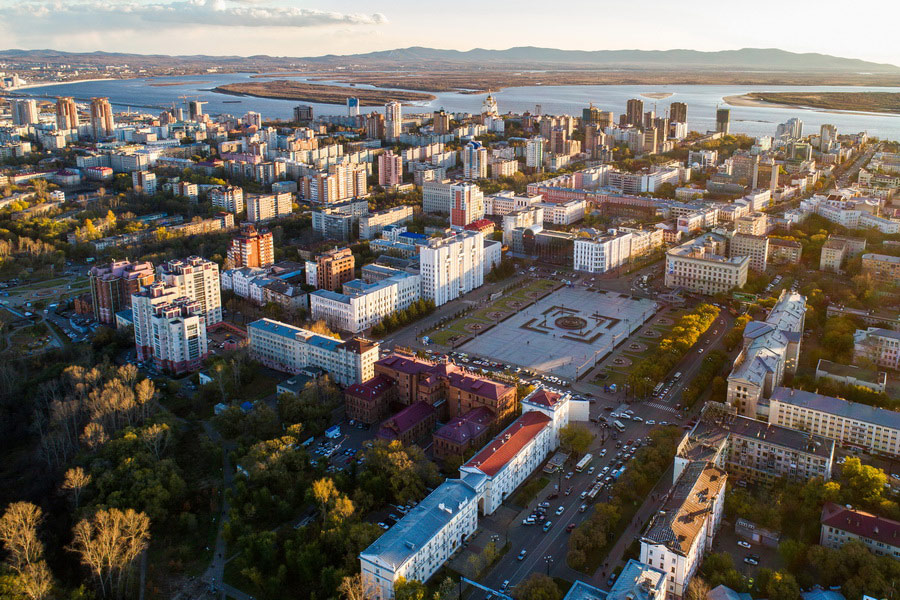
Tours, Attractions and Things To Do in Khabarovsk
Khabarovsk travel guide.
- 1. Architecture
- 2. Attractions
- 3. Cultural life
- 4. Souvenirs
Khabarovsk, Russia fascinates visitors with its unusual heritage and fabulous untouched nature. Tourists are drawn to the native culture, eclectic architecture and mesmerizing waters in this off-the-beaten-track destination, which promises a unique and memorable vacation.
As the center of Russia’s far eastern region of Khabarovsk Krai, the city offers celebrations throughout the year which are sure to give added flair to your trip, from traditional culture days to large-scale food fests. It is easy to keep a full itinerary during your stay thanks to its many theaters, museums, restaurants, workshops and quest rooms. Guests who want a more relaxed holiday can venture into the serenity of Khabarovsk nature, including the coast of the Sea of Japan or one of the region’s many picturesque lakes .

Khabarovsk Architecture
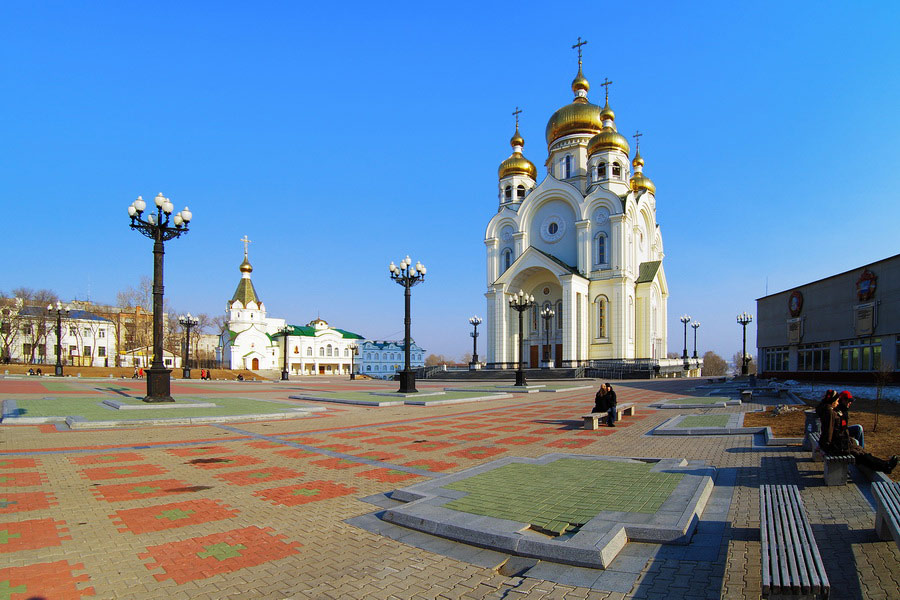
Khabarovsk architecture surprises with its harmonious blending of varying types and styles. This is due in large part to major changes which the city underwent in the mid-19th-early 20th centuries in conjunction with developments in the political, economic, scientific and technical spheres. The search for new trends in architecture came after the death of the classicism style, which had dominated the Russian Empire and the wider world for centuries. Beginning in the mid-19th century, the practice of mixing eclectic architectural styles began to emerge, leading to an era of amazing stylistic improvisations.
During the final decades of Romanov reign, many educational institutions for architects and engineers were opened. As a result, the face of numerous Russian cities began to change rapidly. Art Nouveau - a new, modern trend that absorbed several preceding styles – had come to dominate the architectural scene.
Many Art Nouveau buildings can still be seen in central Khabarovsk. These include:
- Takeuchi apartment building (5 Muravyov-Amursky Street)
- Esplanade Hotel (18 Muravyov-Amursky Street)
- Luhta apartment building (84 Komsomolskaya Street)
- Zandau apartment building (34 Muravyov-Amursky Street)
Khabarovsk also has many Gothic buildings, a style distinguished by its elegance and attention to detail. Every element of Gothic architecture emphasize a vertical orientation, as seen in the massive walls and columns, round arches and wide windows which contrast with narrow towers, pointed peaks and lancet windows.
Khabarovsk’s Gothic architecture is best represented by the artillery warehouse buildings located at 16 Komsomolskaya Street. Another notable example is the Red Guard Headquarters (105 Komsomolskaya Street), which has been preserved in its original form. The complex consists of two identical two-story brick buildings with unusual motifs containing pseudo-gothic elements.
Also of note is the early 20th-century Treasury Building, a luxurious red brick structure with openwork balconies that exudes an architectural grace.
Khabarovsk also has many Soviet-era buildings which were mostly designed in the constructivism style. Characterized by their enormous size and grotesque shapes, they often occupy most of the block and dominate the surrounding space.
During your Khabarovsk excursion, be sure to appreciate its unique architectural heritage by going for a walk downtown .
Khabarovsk Attractions
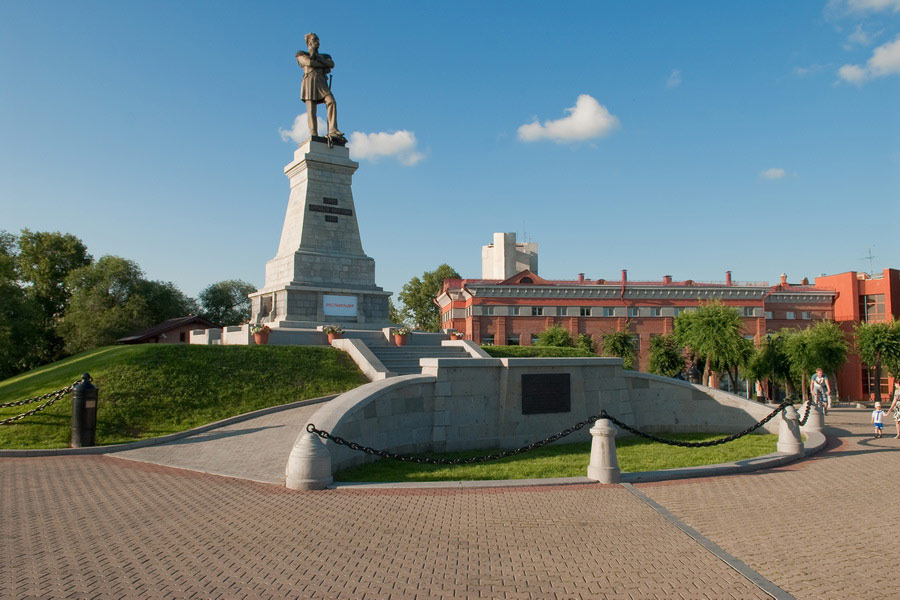
The layout of Khabarovsk is very simple: its 3 main streets of Lenin, Muravyov-Amursky and Seryshev pass through the downtown area, while Ussuriysky and Amur Boulevards run perpendicular to them. A distinctive feature of Khabarovsk are its many hills, so we recommend wearing comfortable shoes for your walk.
Begin your walking tour of Khabarovsk from the train station, where you can see the monument to Yerofey Khabarov, the famous explorer for whom the city is named. Nearby is a sculpture of a double-headed eagle, erected in memory of soldiers, officers and builders of the Far Eastern Railway. Moving from the station along Amur Boulevard you will reach the central market, just past which is Lenin Square. A spacious area with a granite fountain in the center, it is the main plaza of Khabarovsk and the site of the city’s Christmas and New Year celebrations. Next to the square is Dynamo Park, famous for its three ponds and Ferris wheel.
From Lenin Square, move along Muravyov-Amursky Street to reach Amur Embankment, passing most of Khabarovsk’s famous 19th-20th century buildings along the way. Descend to the embankment via two grand staircases or make a small detour onto Shevchenko Street, where you can follow the slope until you reach the embankment’s main stretch. Among other things, the area is home to the House of Officers and three museums.
As you move along the embankment through a park you will come across the city symbol of Khabarovsk, a building set on a steep cliff above the Amur River. It was at the foot of this cliff that the founders of a military post, the first semblance of civilization in the area, first landed.
After reaching the river and walking along Ussuriysky Boulevard to Turgenev Street, turn right to reach Glory Square. Here you will find another famous Khabarovsk landmark, Transfiguration Cathedral, along with a magnificent view of the Amur River and its dreamy islands. Glory Square concludes the main walking route of Khabarovsk, but from here you can reach any part of the city by public transport or taxi .
Khabarovsk Cultural Life
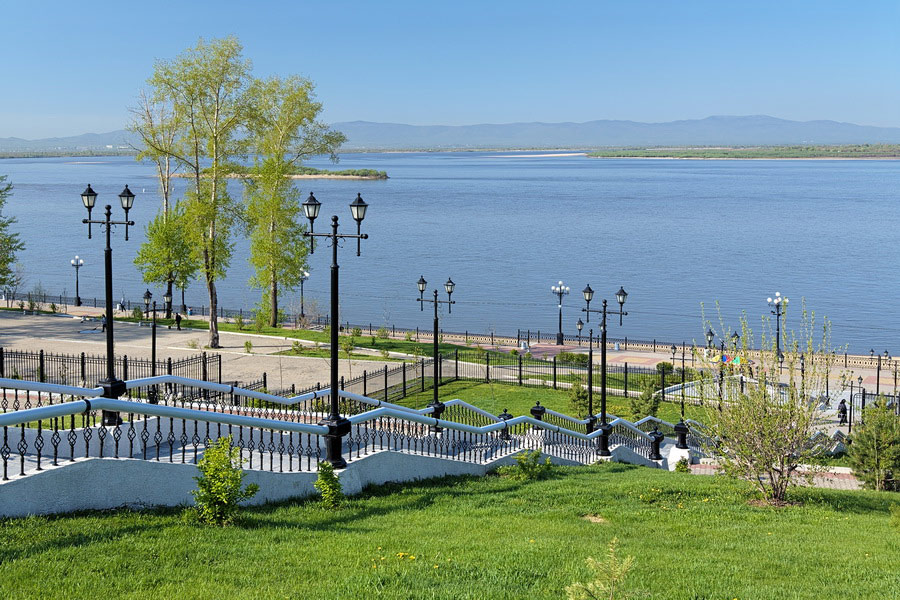
Khabarovsk entertainment centers around its many theaters and museums. Visit Khabarovsk Museum of Local Lore to get a better glimpse of city and regional life. Children and adults alike will want to visit Fishes of Amur River Museum, an aquarium which is home to some 90 species of the underwater world. To catch the vibe of local artists, head to the Far Eastern Art Museum.
There are several theaters in Khabarovsk, each of which is worth visiting:
- Khabarovsk Regional Puppet Theater;
- Triad Pantomime Theater;
- Khabarovsk Regional Philharmonic;
- White Theater, and others.
In addition, Khabarovsk offers several concert halls, culture houses, cinemas and art institutions .
Khabarovsk Souvenirs
While the city’s souvenir selection is not as diverse as in other Russian cities, guests can still find something suited to their tastes on their tour to Khabarovsk. Amur River and the Sea of Japan offer an abundance of seafood that can be tasted on the spot or brought home in dried or smoked form. Yet it is the rich culture of the local indigenous peoples which provides the largest selection of national souvenirs.
If you’re looking for an original gift, traditional Nanai slippers are comfortable and warm. Sewn from leather or fabric and decorated in a bright, colorful style before being trimmed with fur, they make the perfect house shoes in winter. Traditional decorations include amulets which are made from animal bones, fur or fabrics and decorated with ribbons and colored beads.
Standard souvenirs like plates, magnets, mugs and flasks stamped with images of Khabarovsk or its coat of arms can be purchased in souvenir shops, which are mostly located downtown and at the airport and railway station.
You have exceeded your limit for simultaneous device logins.
Your current subscription allows you to be actively logged in on up to three (3) devices simultaneously. click on continue below to log out of other sessions and log in on this device., marijke visser | movers & shakers 2024—advocates.

Visser's work on E-Rate policy and technology equity has been a game-changer for communities across the country, including in tribal libraries, where she helped improve access to broadband.
Change Through Broadband
Not long after Marijke Visser arrived at library school with plans to become a children’s librarian, two policy classes shifted her career trajectory. “These courses put the ‘why’ and ‘how’ [of library services] into perspective for me,” she says. “The content and discussions reignited my commitment to working to change systemic and/or institutional inequities.”
Visser eventually spent 10 years at the American Library Association (ALA) Office for Information Technology Policy, doing significant work to advance technology equity through the FCC’s E-Rate program. It has been a game-changer for communities across the country, such as the long-lasting outcome of developing tribally owned fiber networks that connect six Pueblo libraries in New Mexico.
“Now one of the Pueblos has used the fiber network to offer internet access to homes where no one had ever had home internet,” says Visser. This has rippled into other policy shifts at the federal level to improve broadband access for tribal libraries, and “is the thing I am most proud of,” she adds.
Currently Director of Library Development at the Maine State Library, Visser has implemented collaborations with the Maine Connectivity Authority and Governor’s Climate Council Equity Subcommittee, among other partnerships. She “truly illustrates [the] ability to leverage state and national resources to increase local capacity,” says State Librarian Lori Fisher. Bringing her skills to the national level, in 2023 Visser was named an ALA policy fellow, focusing on broadband and digital equity.
“There is an amazing library ecosystem in Maine,” says Visser, “and I know there are opportunities to leverage it to advocate for libraries at the state and federal level.”
Get Print. Get Digital. Get Both!
Add comment :-, comment policy:.
- Be respectful, and do not attack the author, people mentioned in the article, or other commenters. Take on the idea, not the messenger.
- Don't use obscene, profane, or vulgar language.
- Stay on point. Comments that stray from the topic at hand may be deleted.
- Comments may be republished in print, online, or other forms of media.
- If you see something objectionable, please let us know. Once a comment has been flagged, a staff member will investigate.
First Name should not be empty !!!
Last Name should not be empty !!!
email should not be empty !!!
Comment should not be empty !!!
You should check the checkbox.
Please check the reCaptcha

Ethan Smith
Lorem Ipsum is simply dummy text of the printing and typesetting industry. Lorem Ipsum has been the industry's standard dummy text ever since the 1500s, when an unknown printer took a galley of type and scrambled it to make a type specimen book.
Posted 6 hours ago REPLY
Jane Fitgzgerald
Posted 6 hours ago
Michael Woodward
Continue reading.
Libraries are always evolving. Stay ahead. Log In.

Added To Cart
Related , winners of ibpa benjamin franklin book awards | book pulse, edgar award winners are announced | book pulse, lashawn myles | movers & shakers 2024—advocates, mychal threets | movers & shakers 2024—advocates, melissa corey | movers & shakers 2024—ban battlers, sarah demaria | movers & shakers 2024—ban battlers, "what is this" design thinking from an lis student.

Run Your Week: Big Books, Sure Bets & Titles Making News | July 17 2018

Materials on Hand | Materials Handling

LGBTQ Collection Donated to Vancouver Archives

Lorem ipsum dolor sit amet, --> Log In
You did not sign in correctly or your account is temporarily disabled
REGISTER FREE to keep reading
If you are already a member, please log in.
Passwords must include at least 8 characters.
Your password must include at least three of these elements: lower case letters, upper case letters, numbers, or special characters.
The email you entered already exists. Please reset your password to gain access to your account.
Create a Password to complete your registration. Get access to:
Uncommon insight and timely information
Thousands of book reviews
Blogs, expert opinion, and thousands of articles
Research reports, data analysis, -->